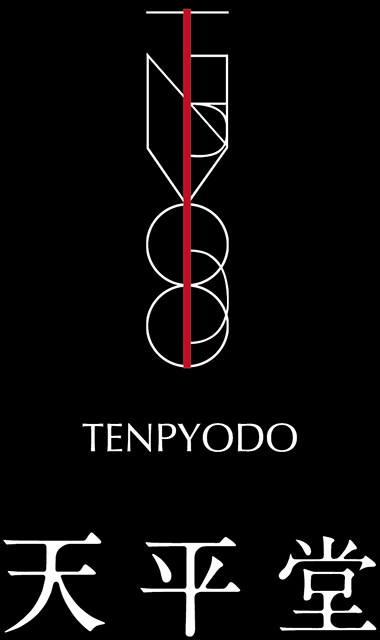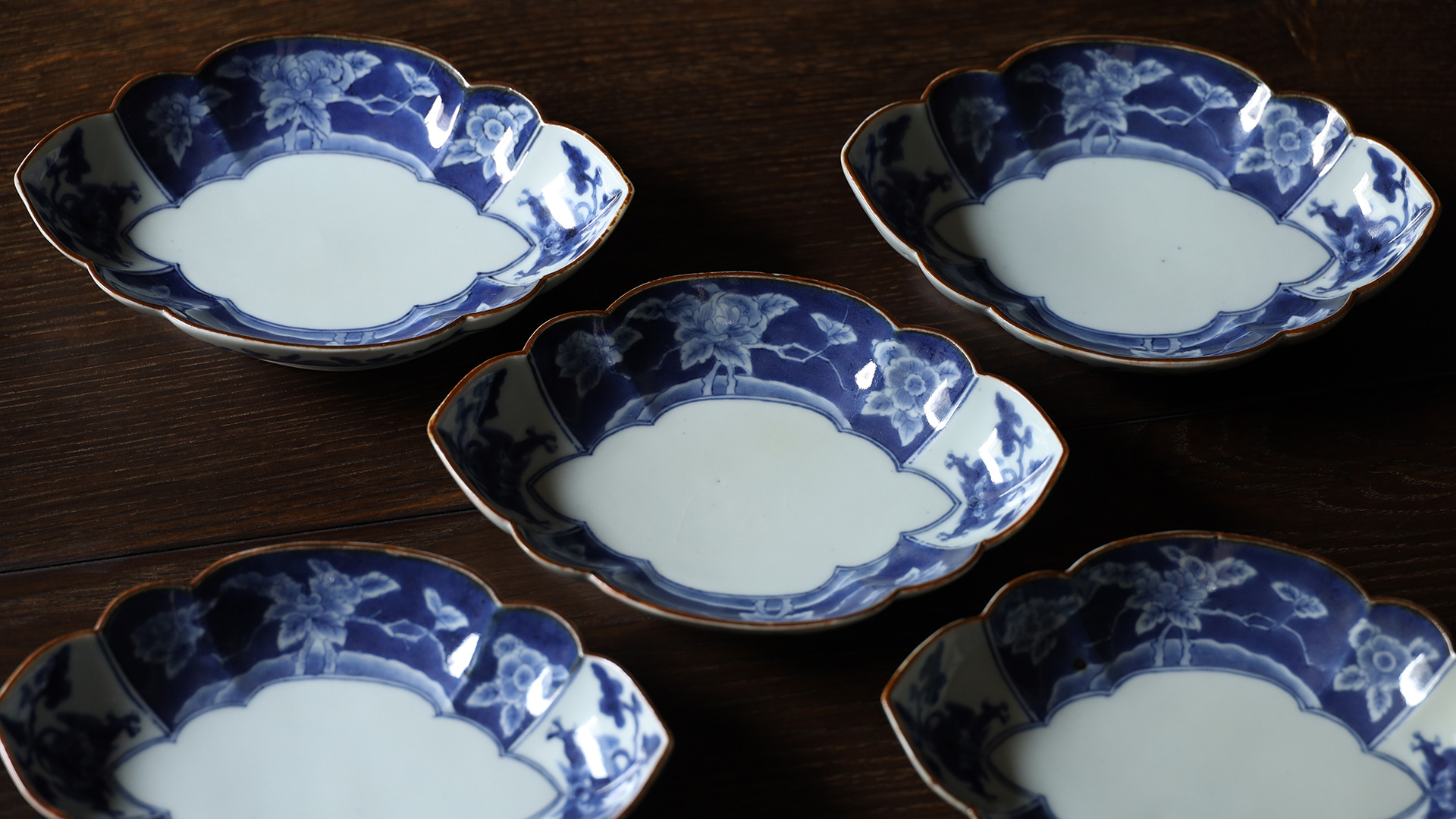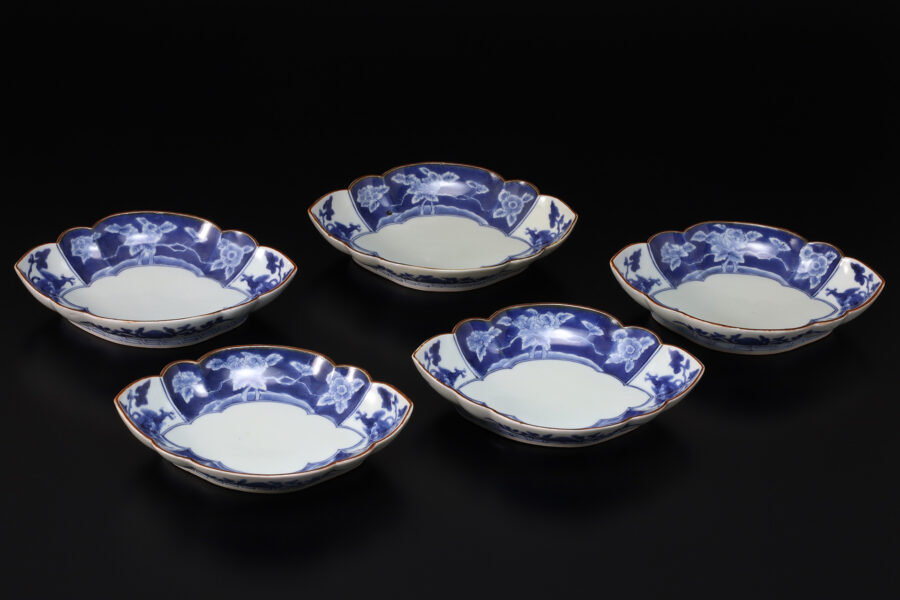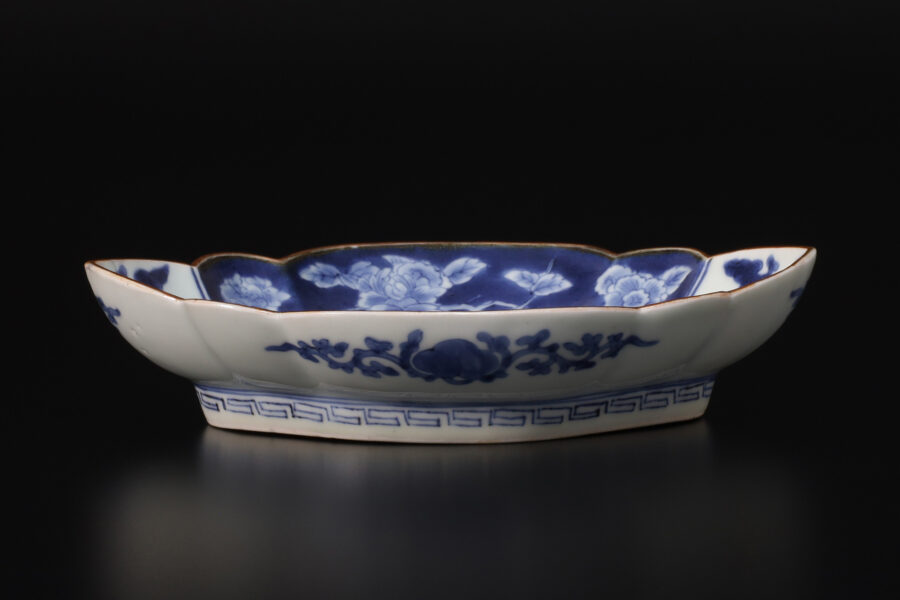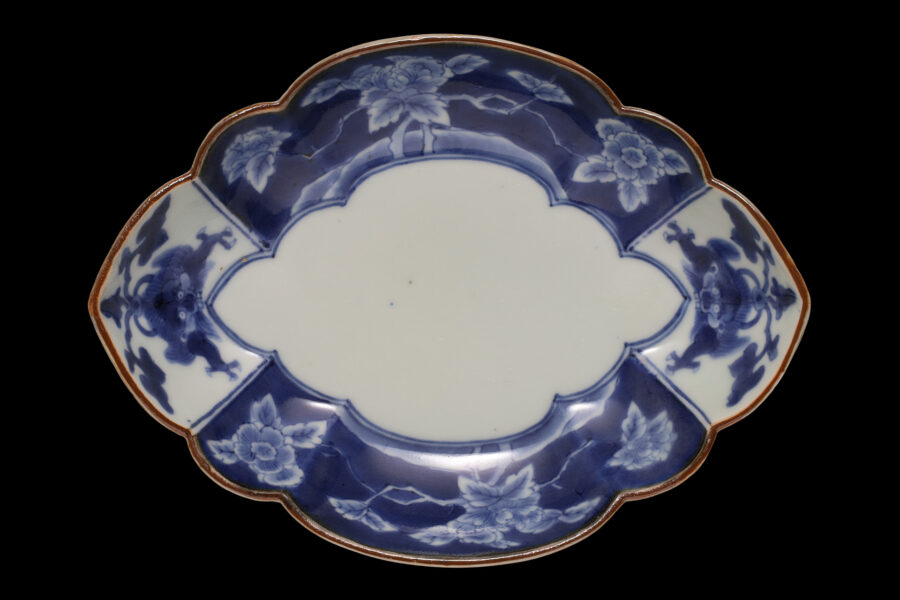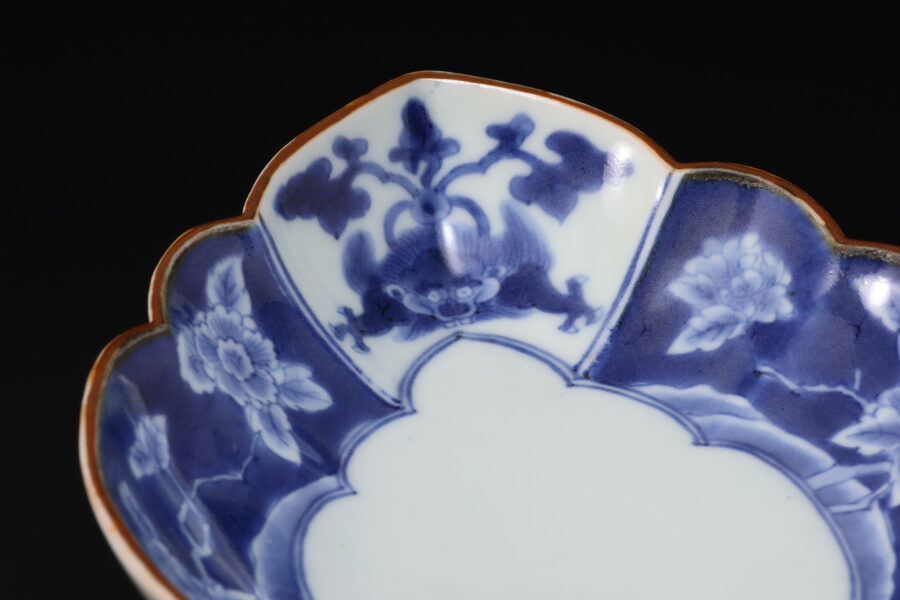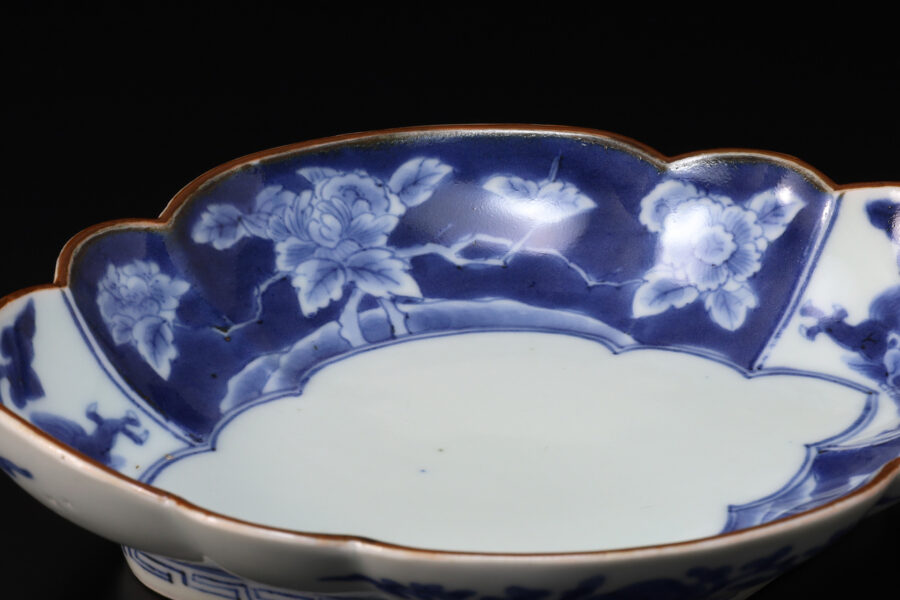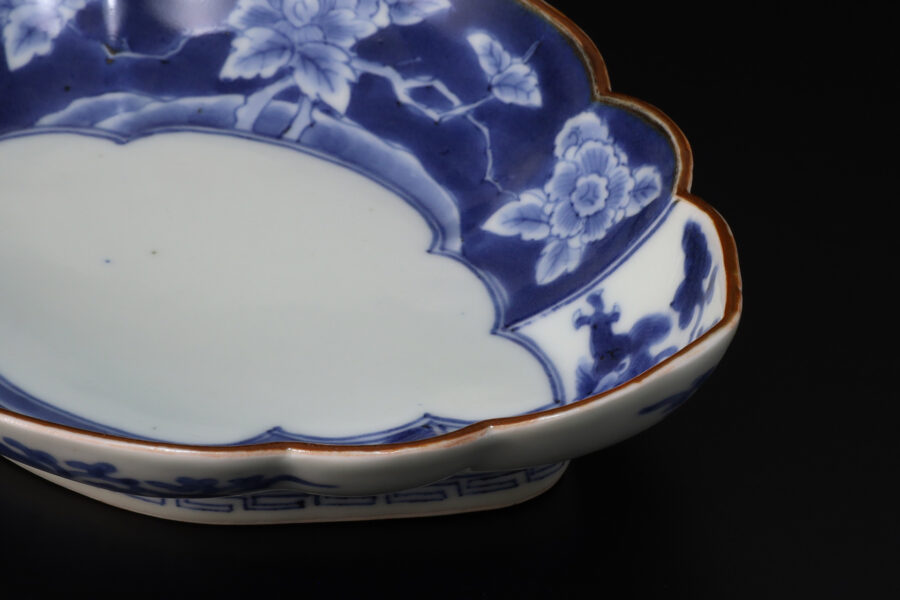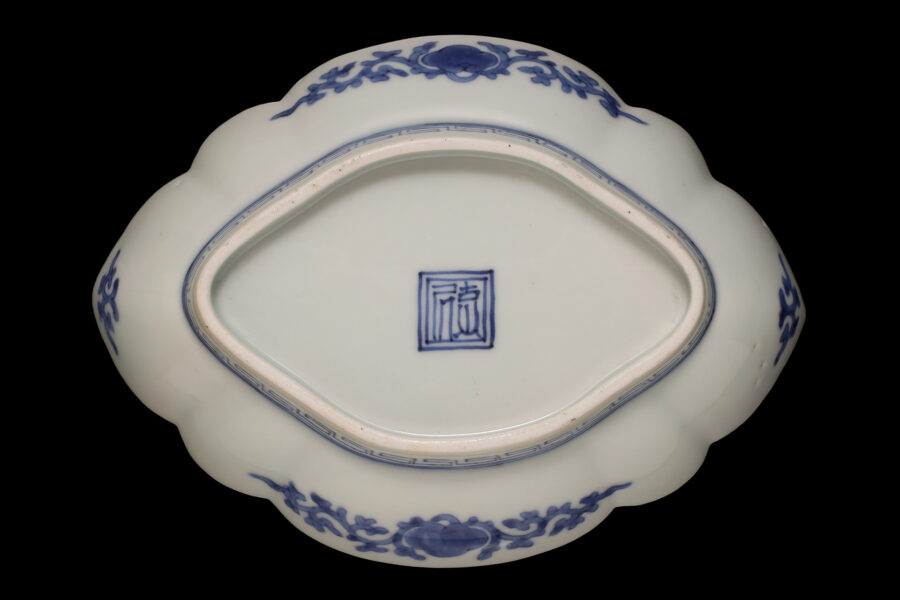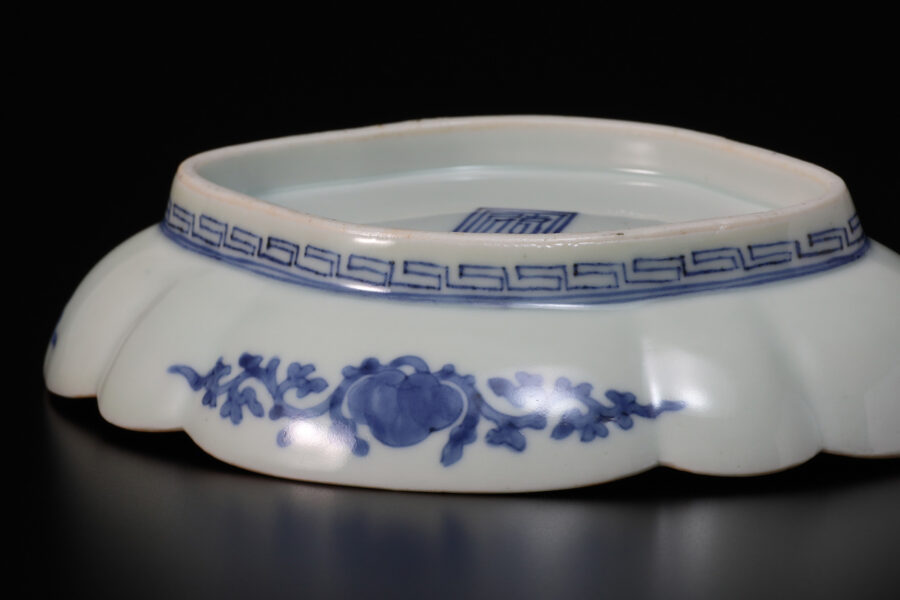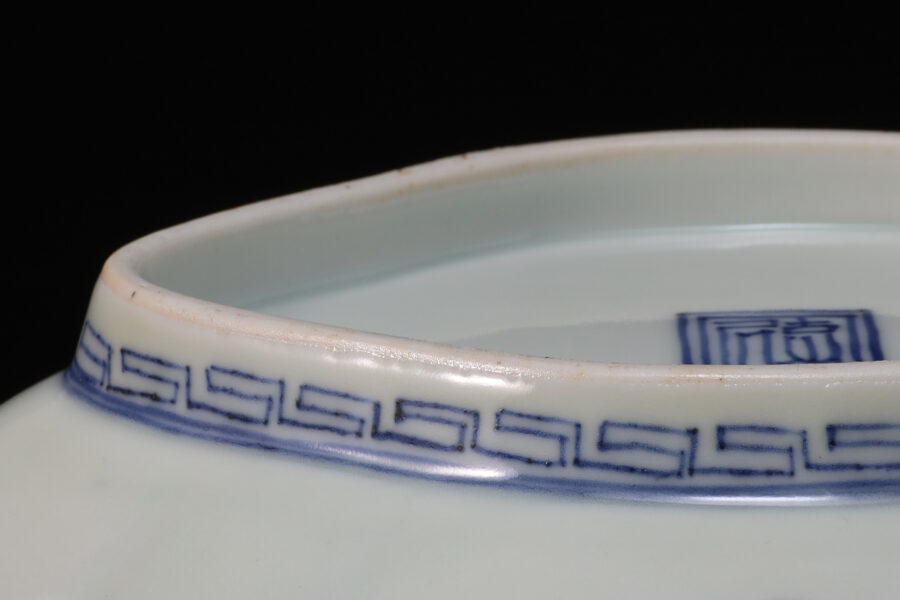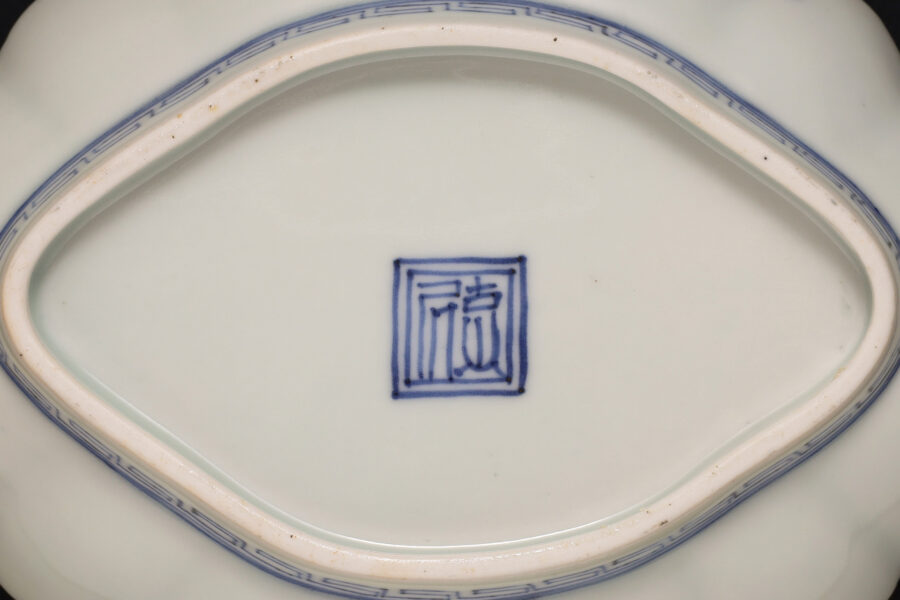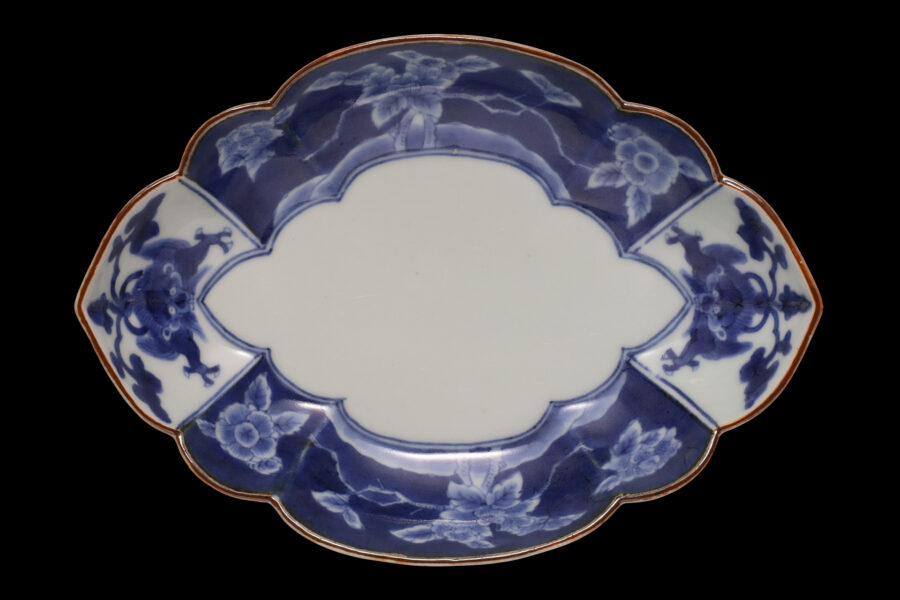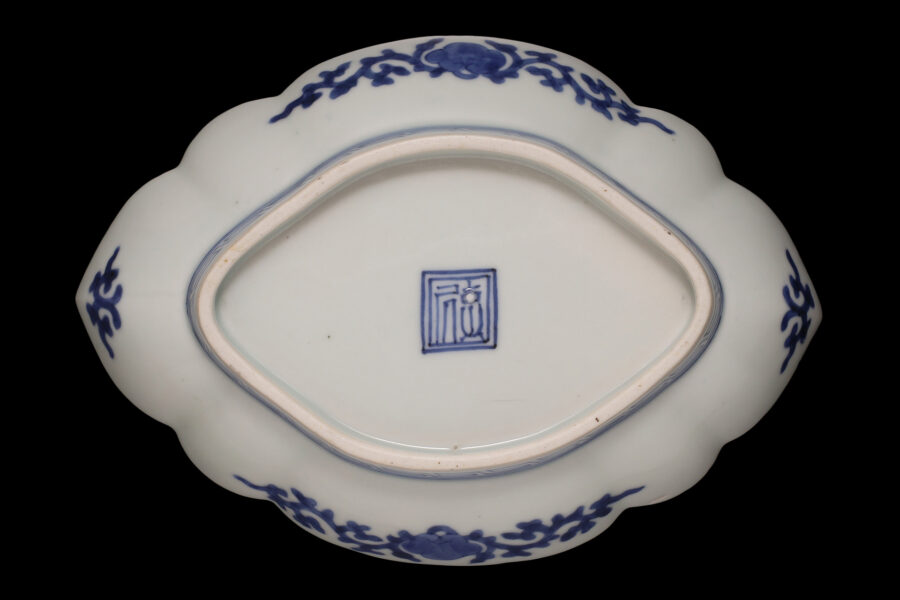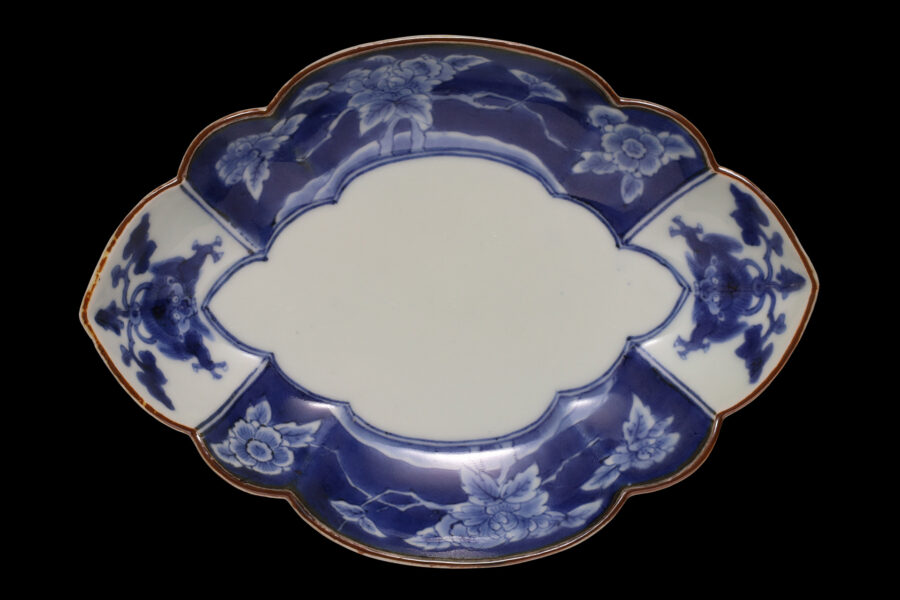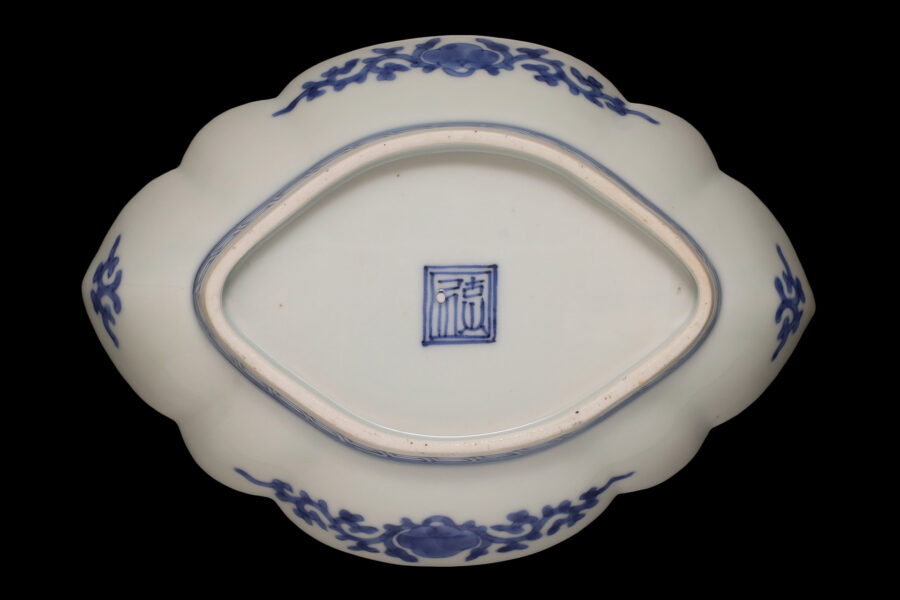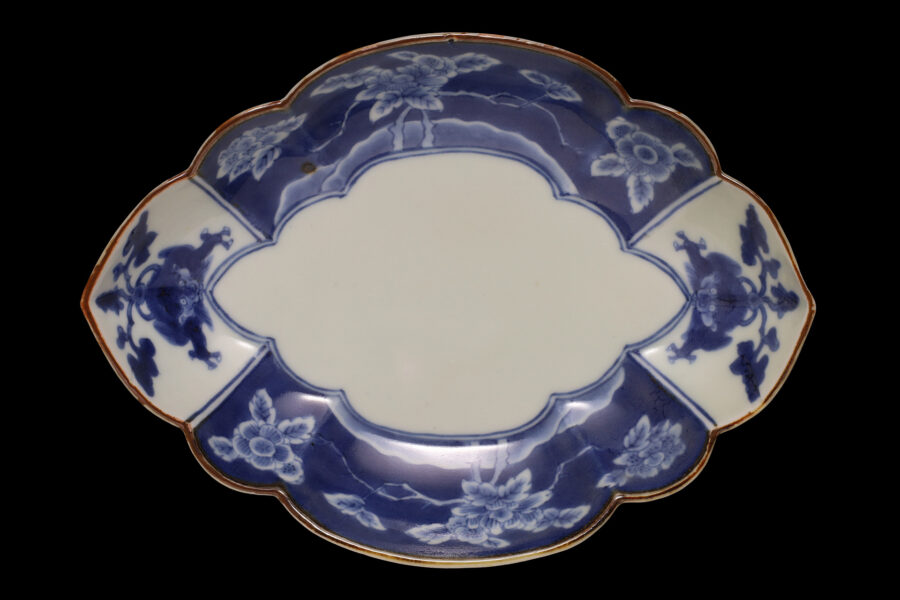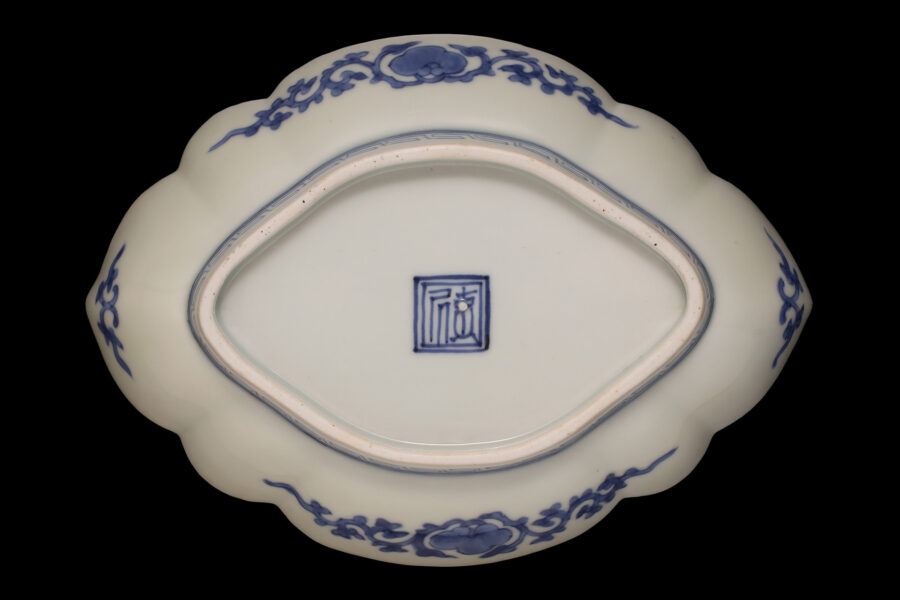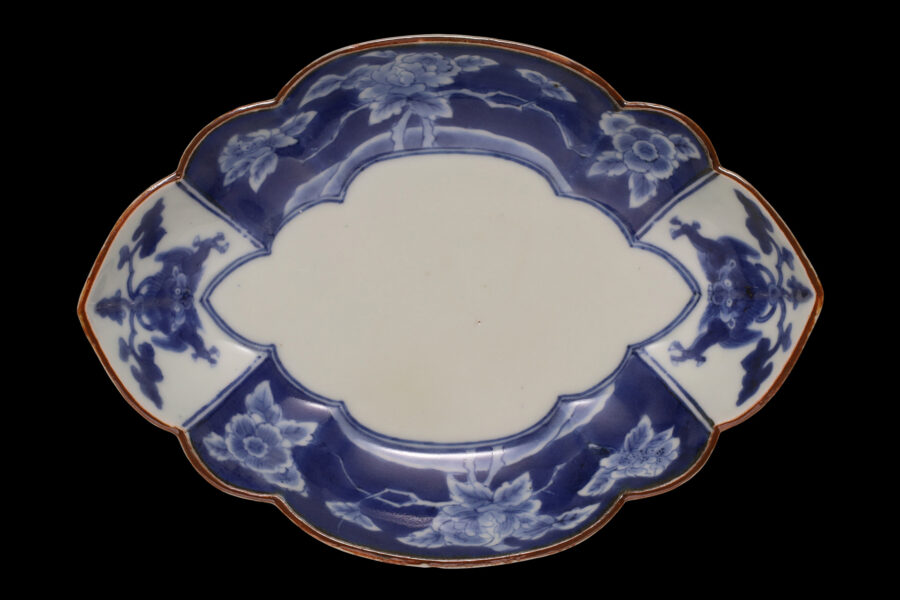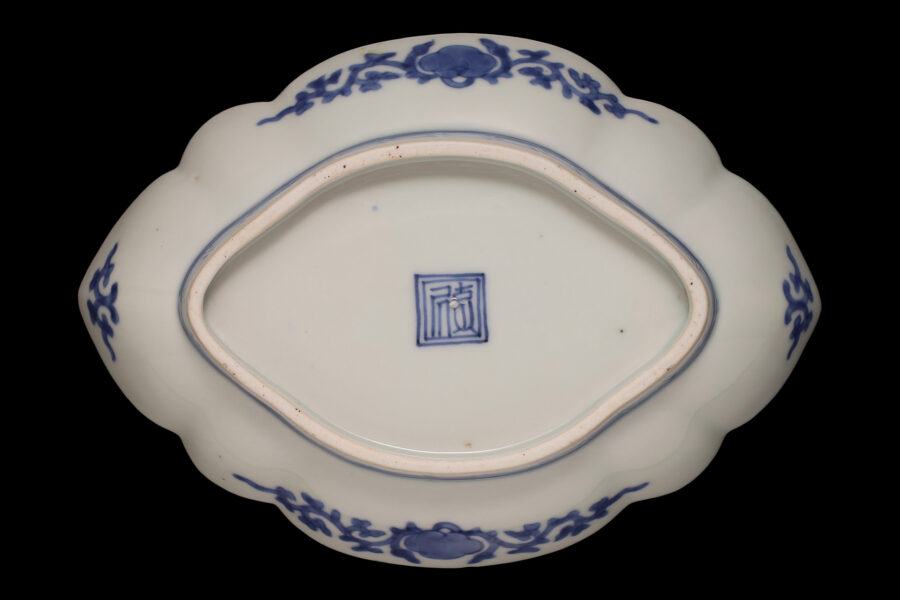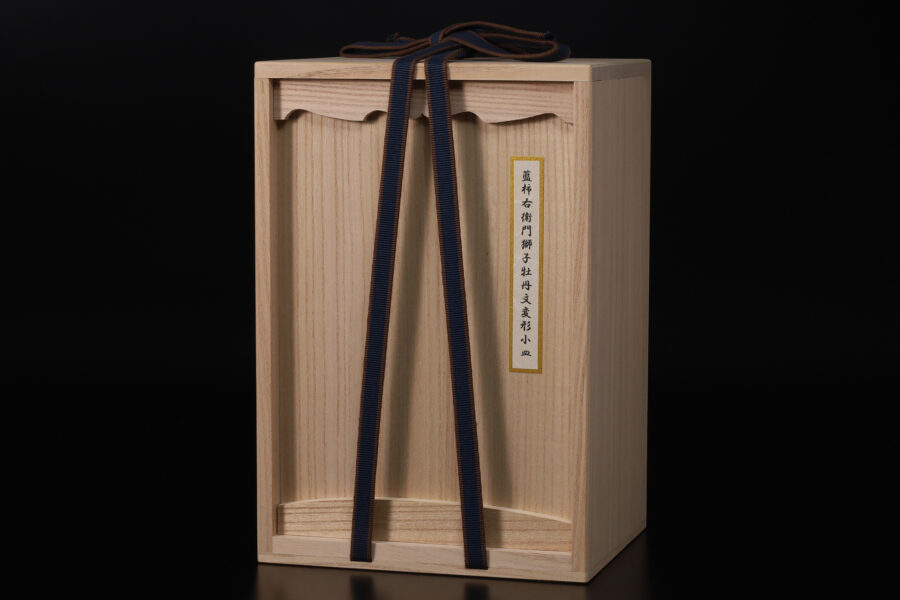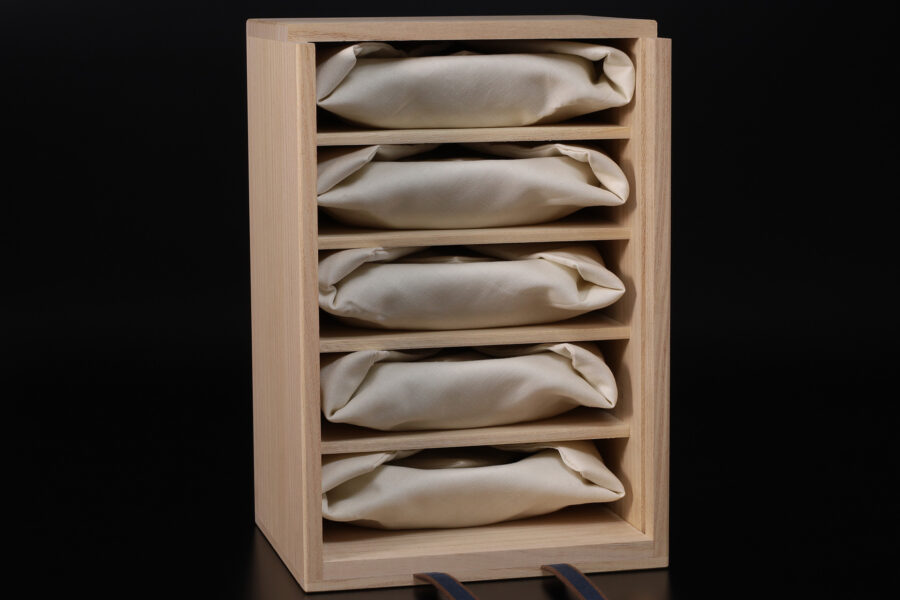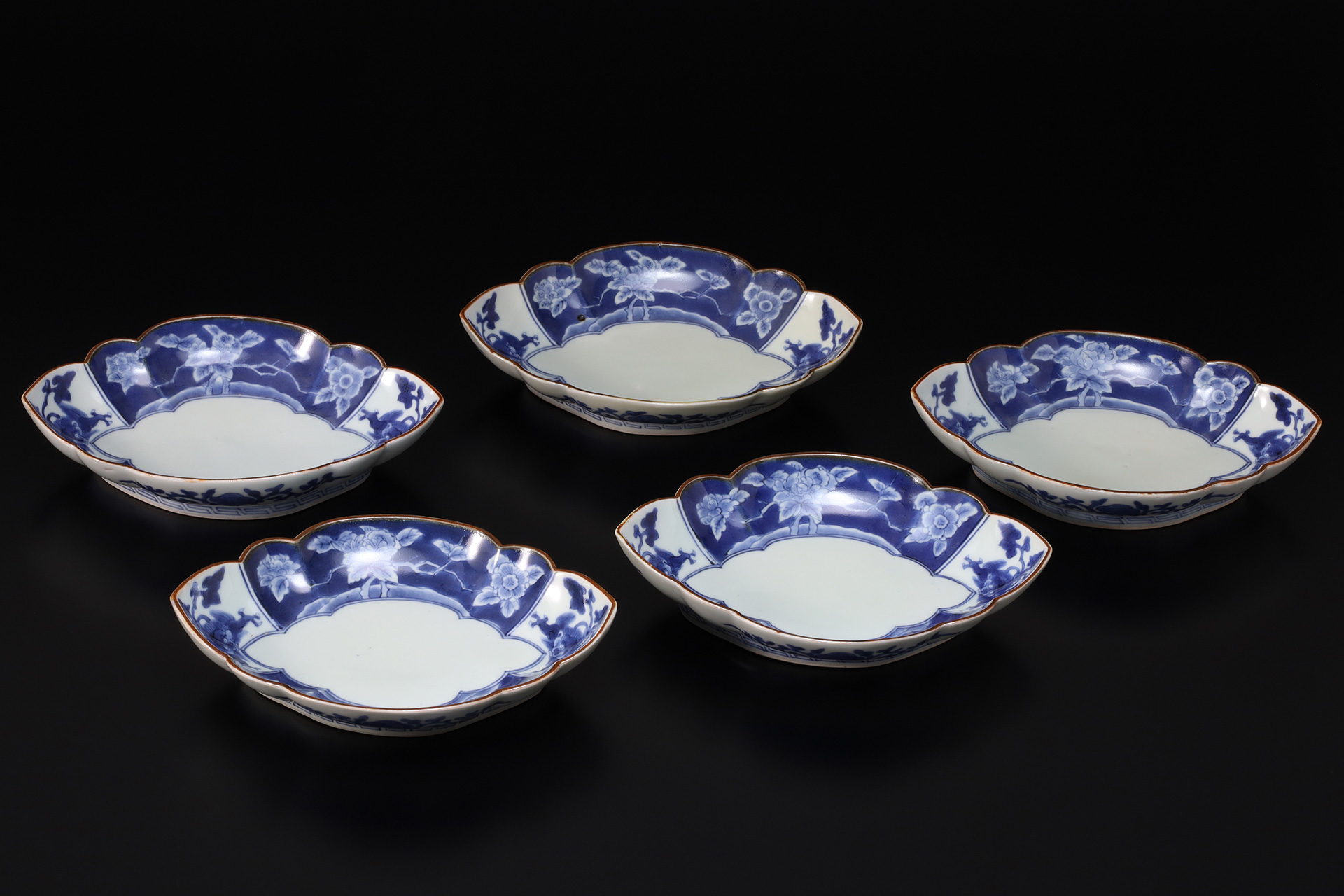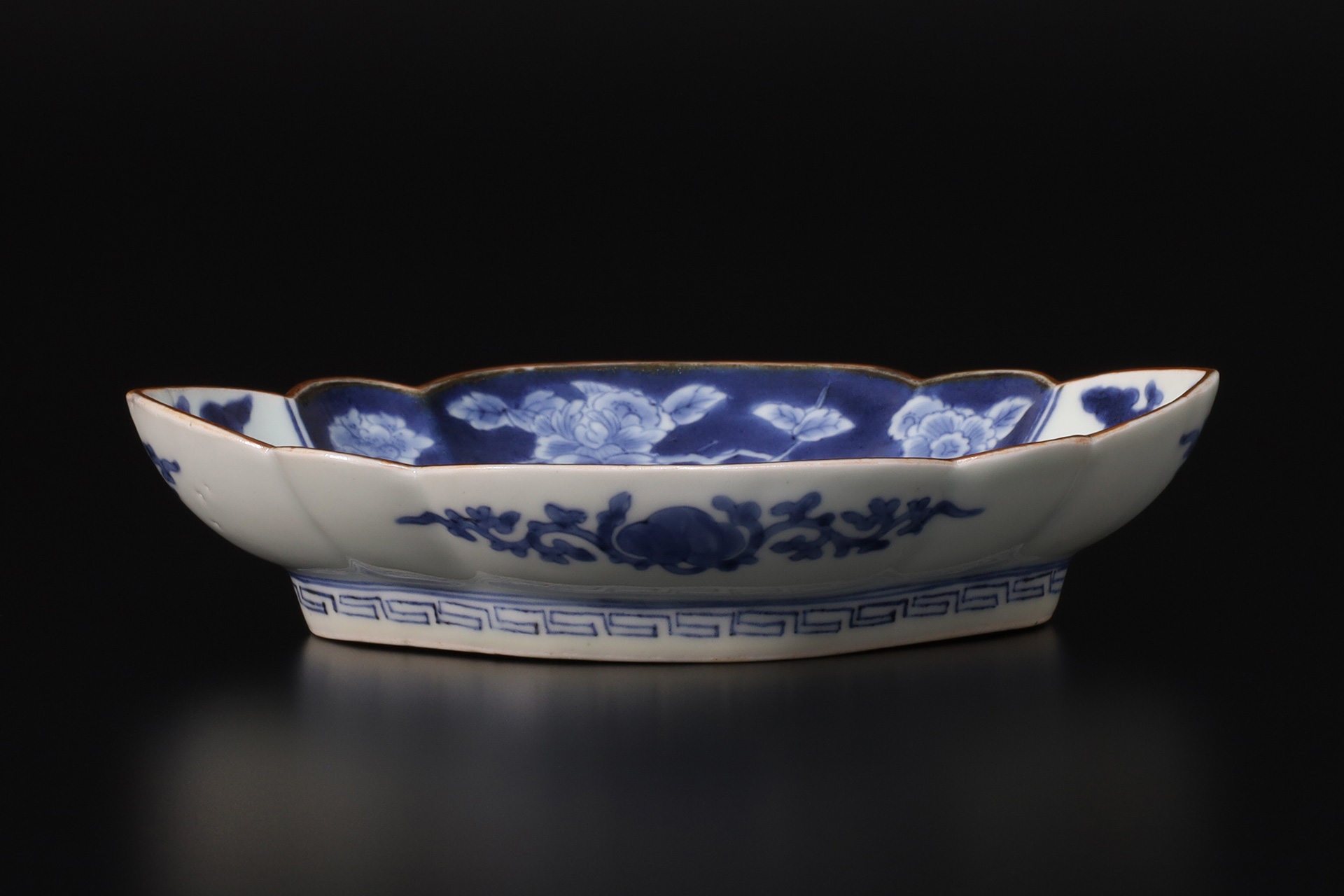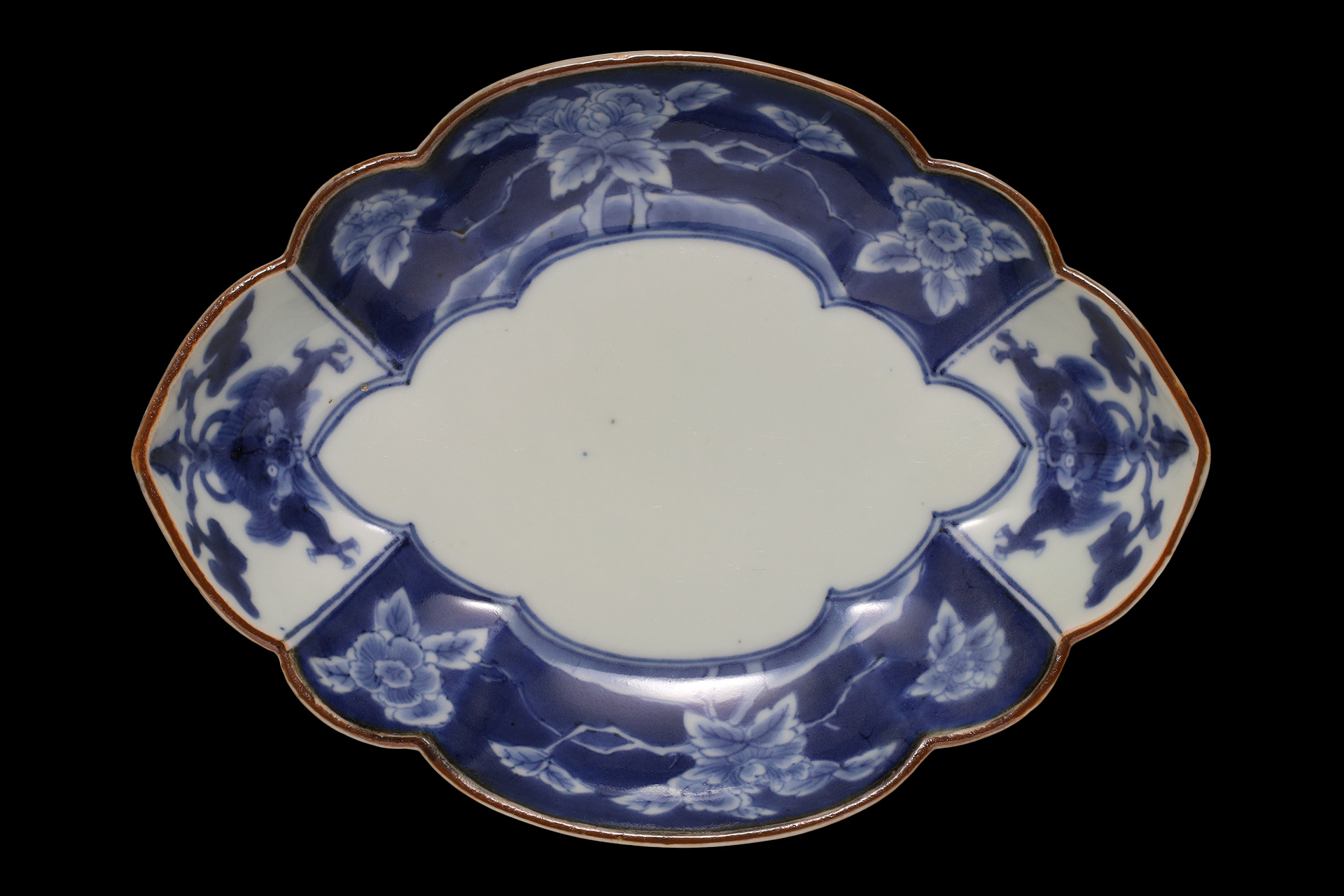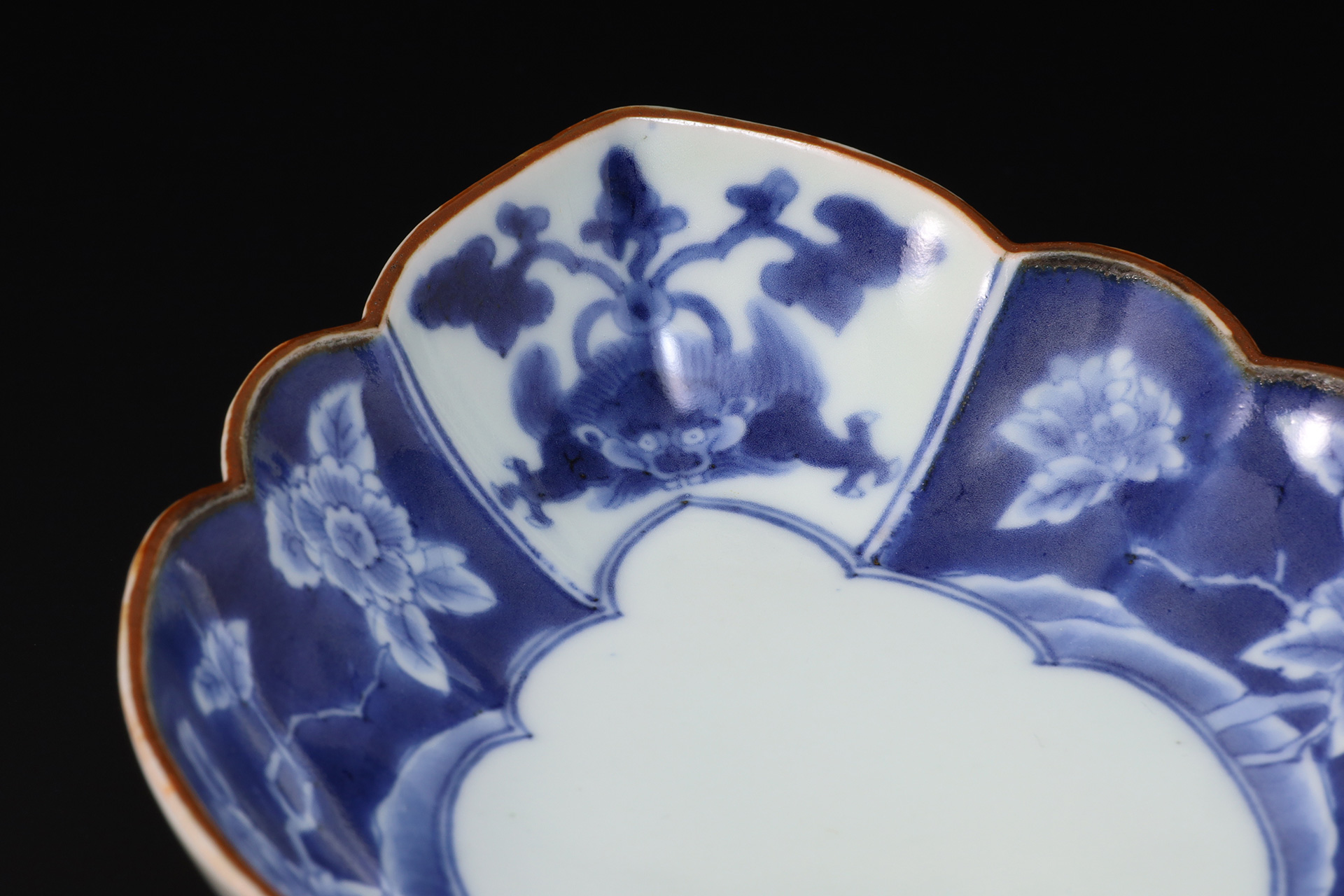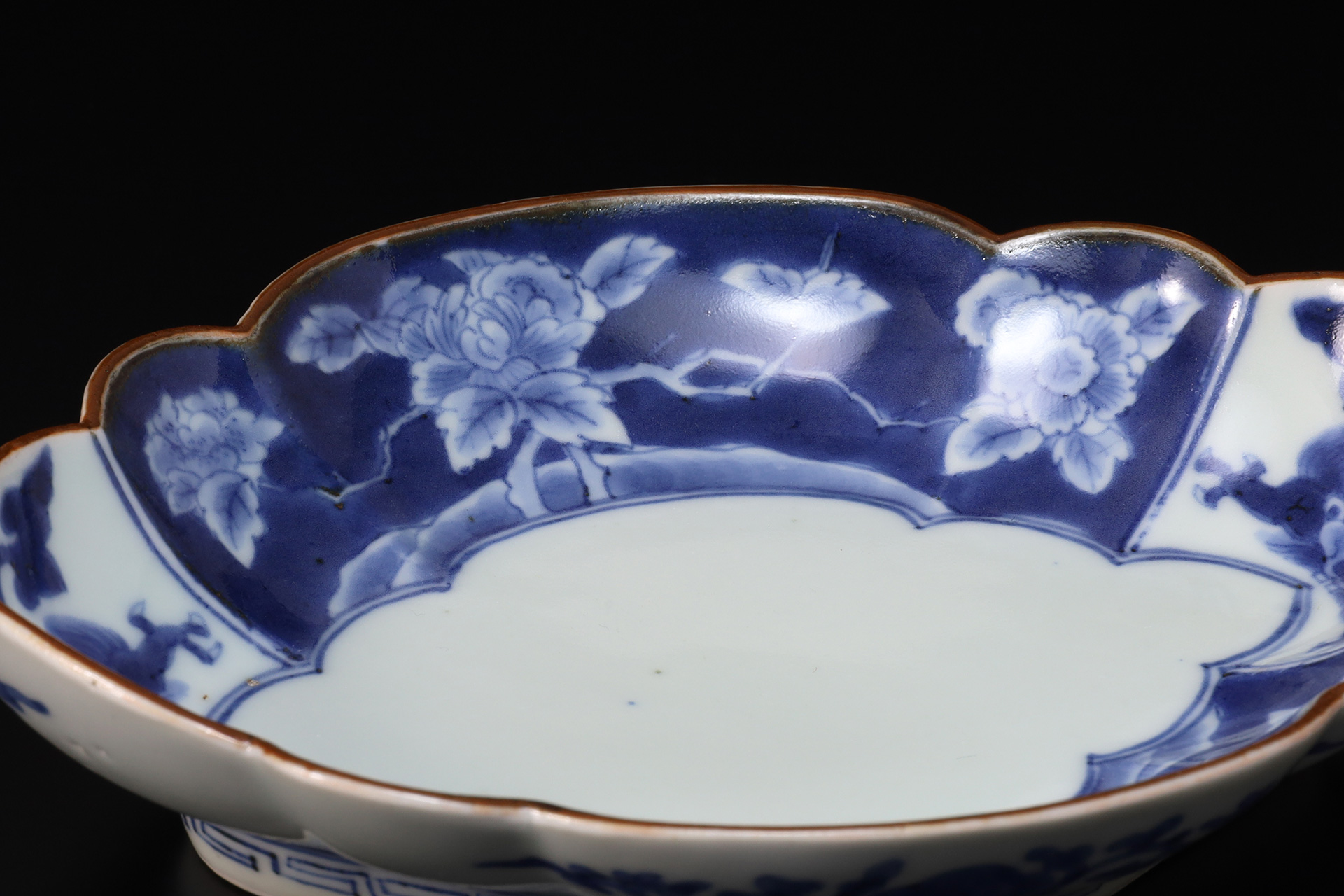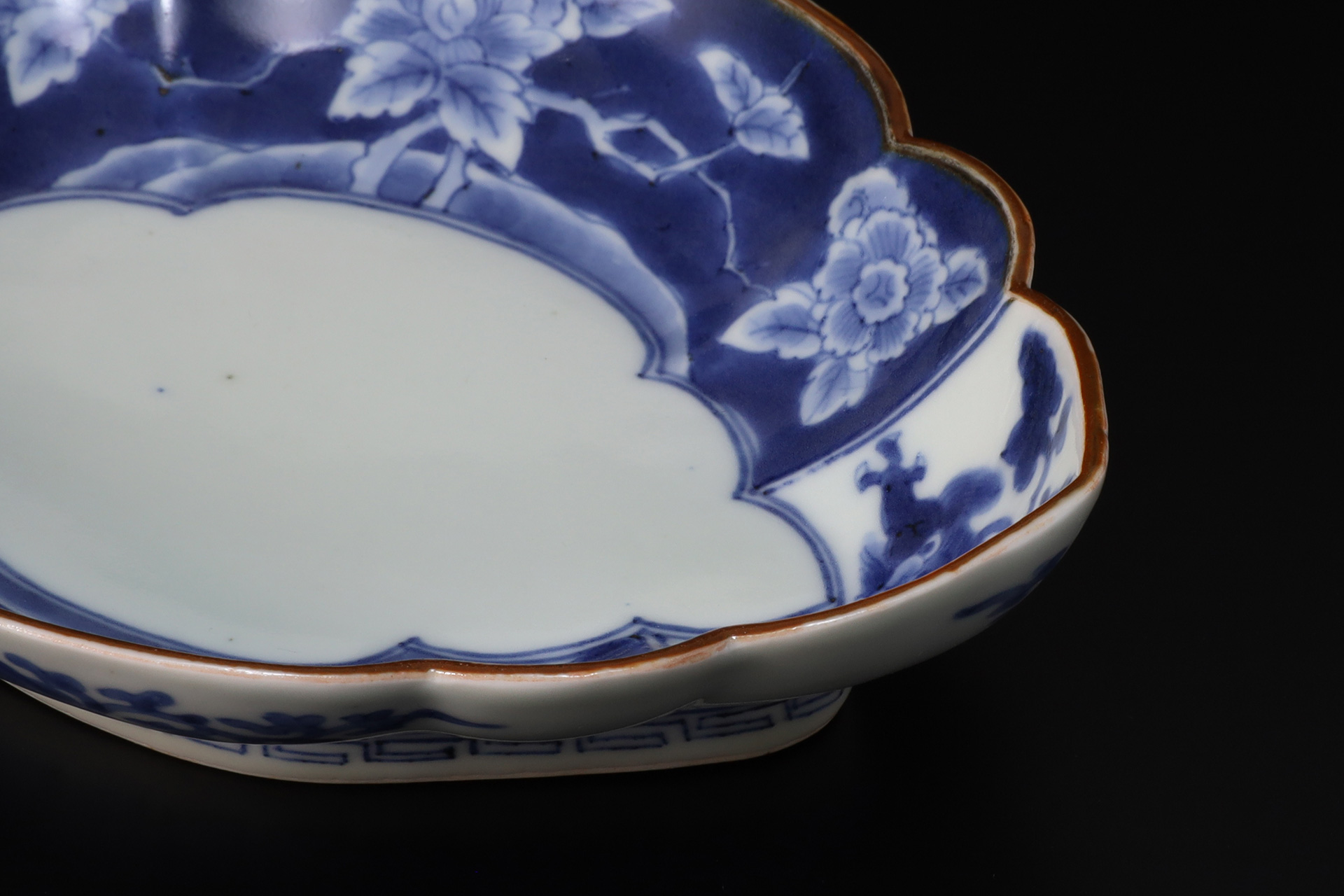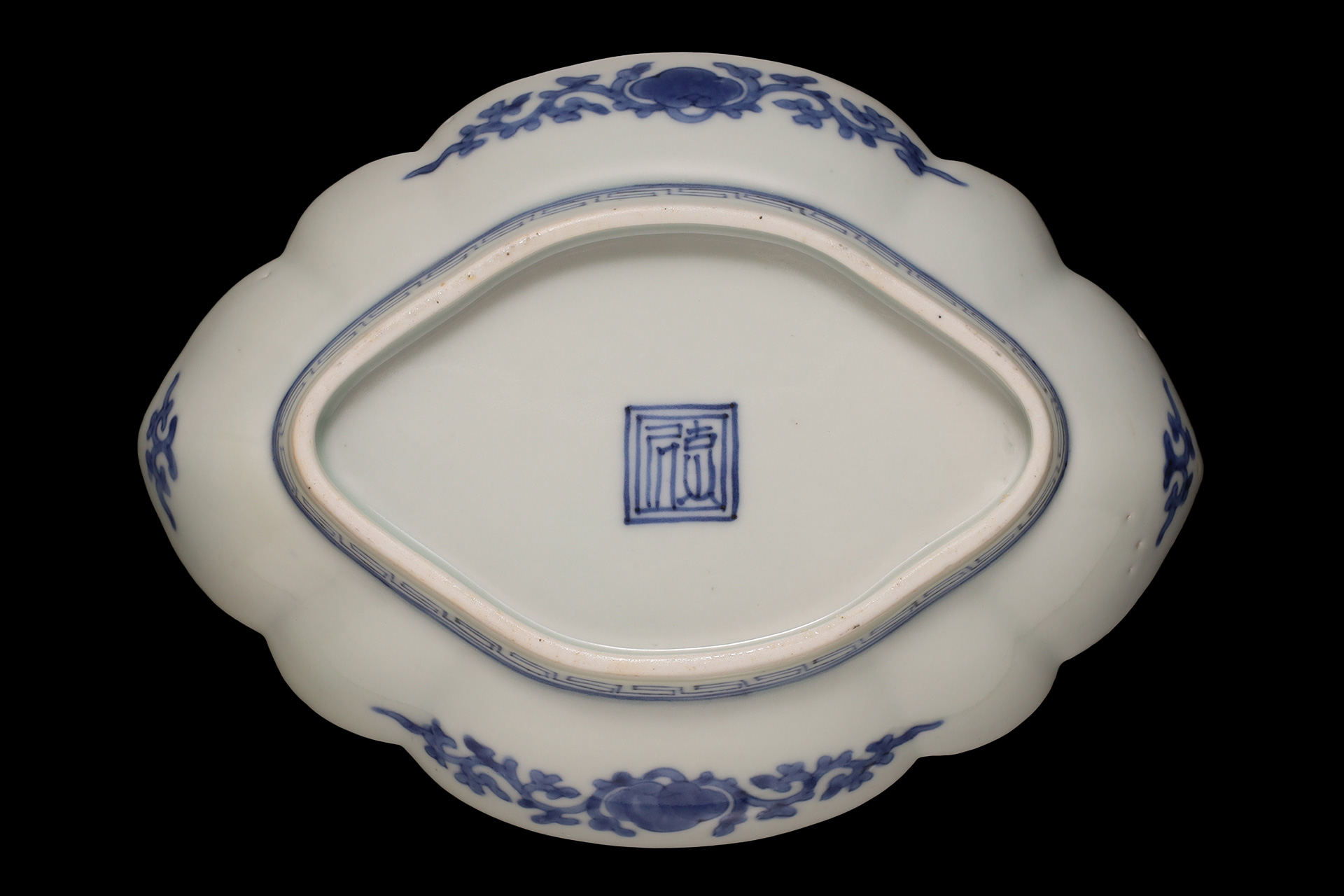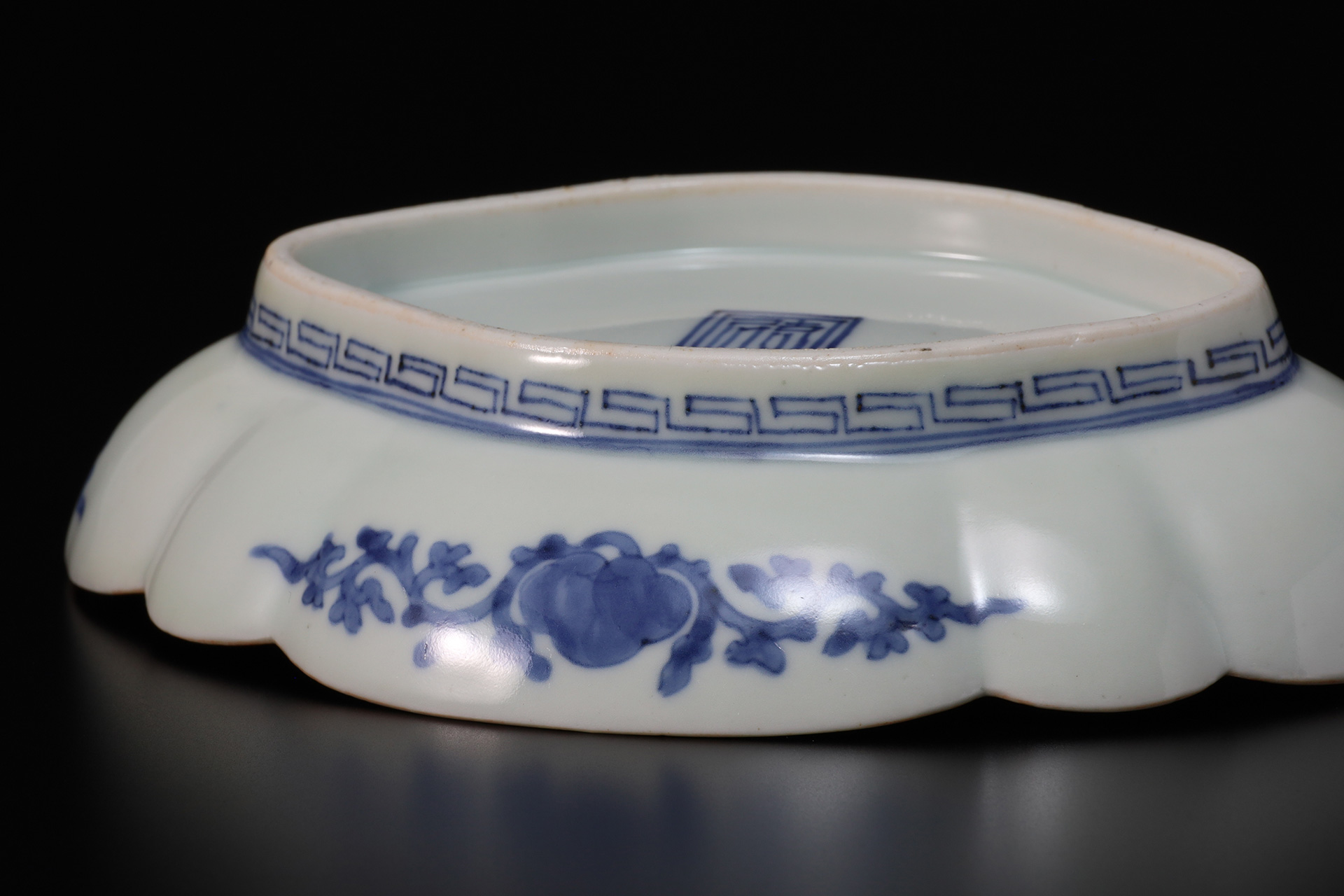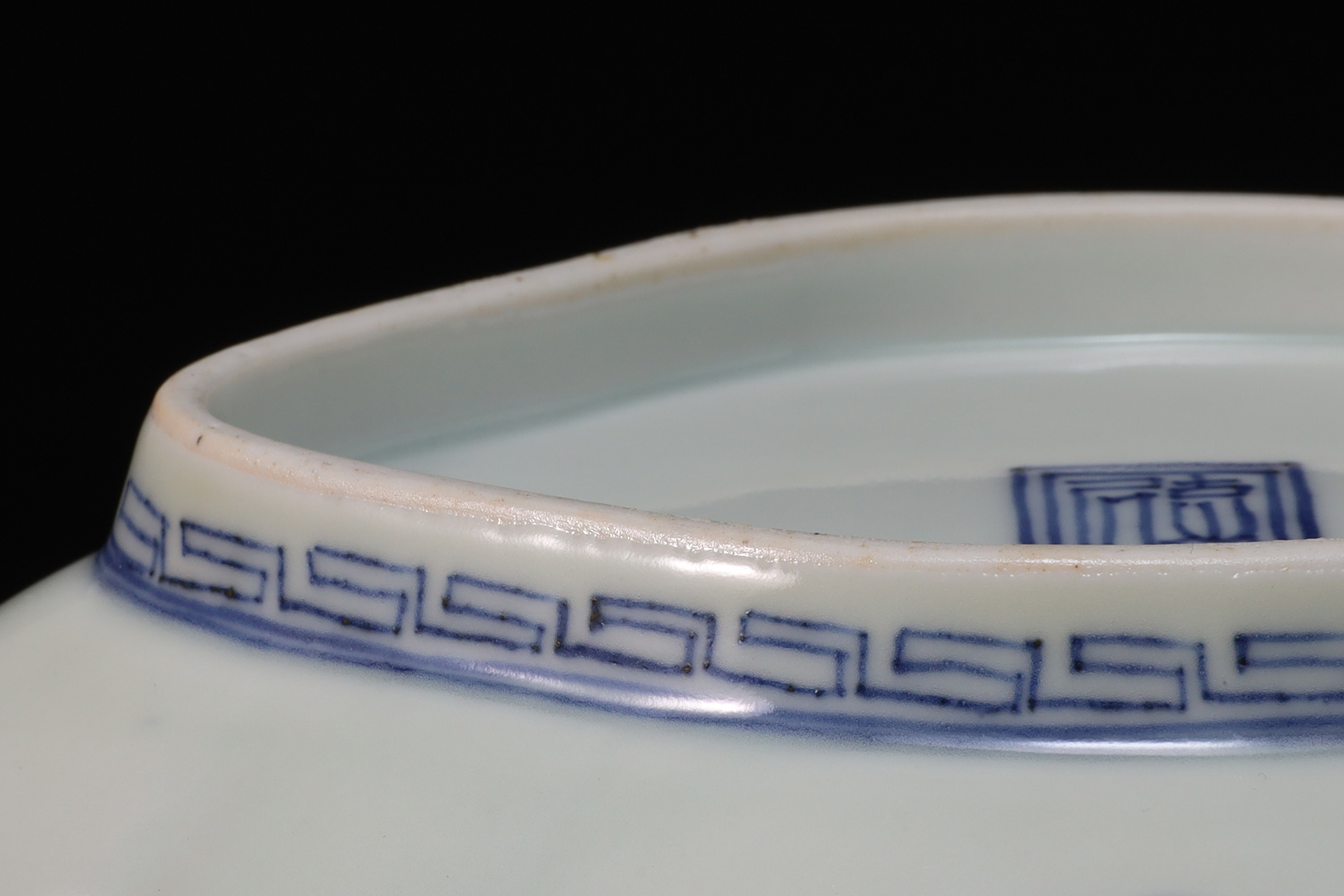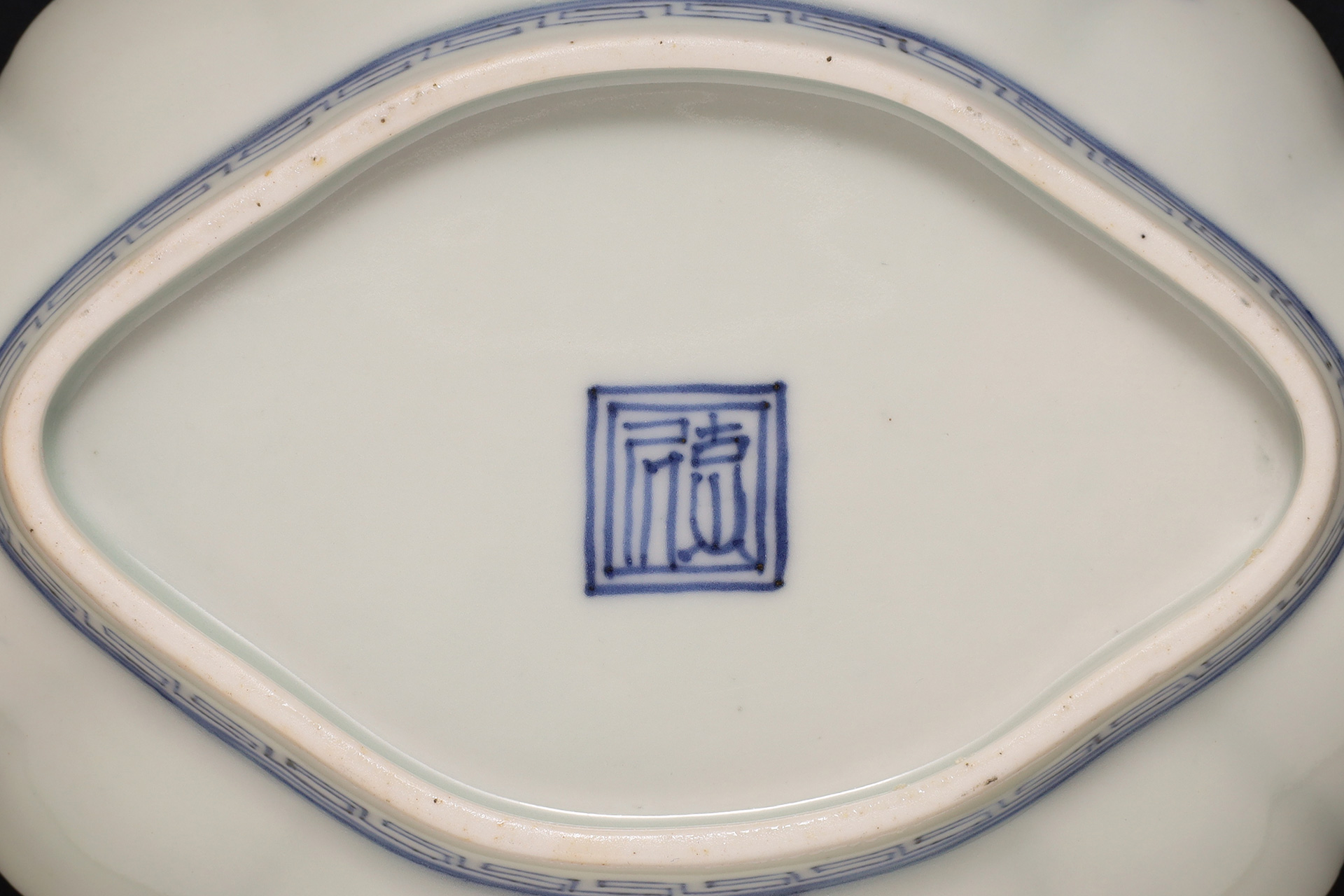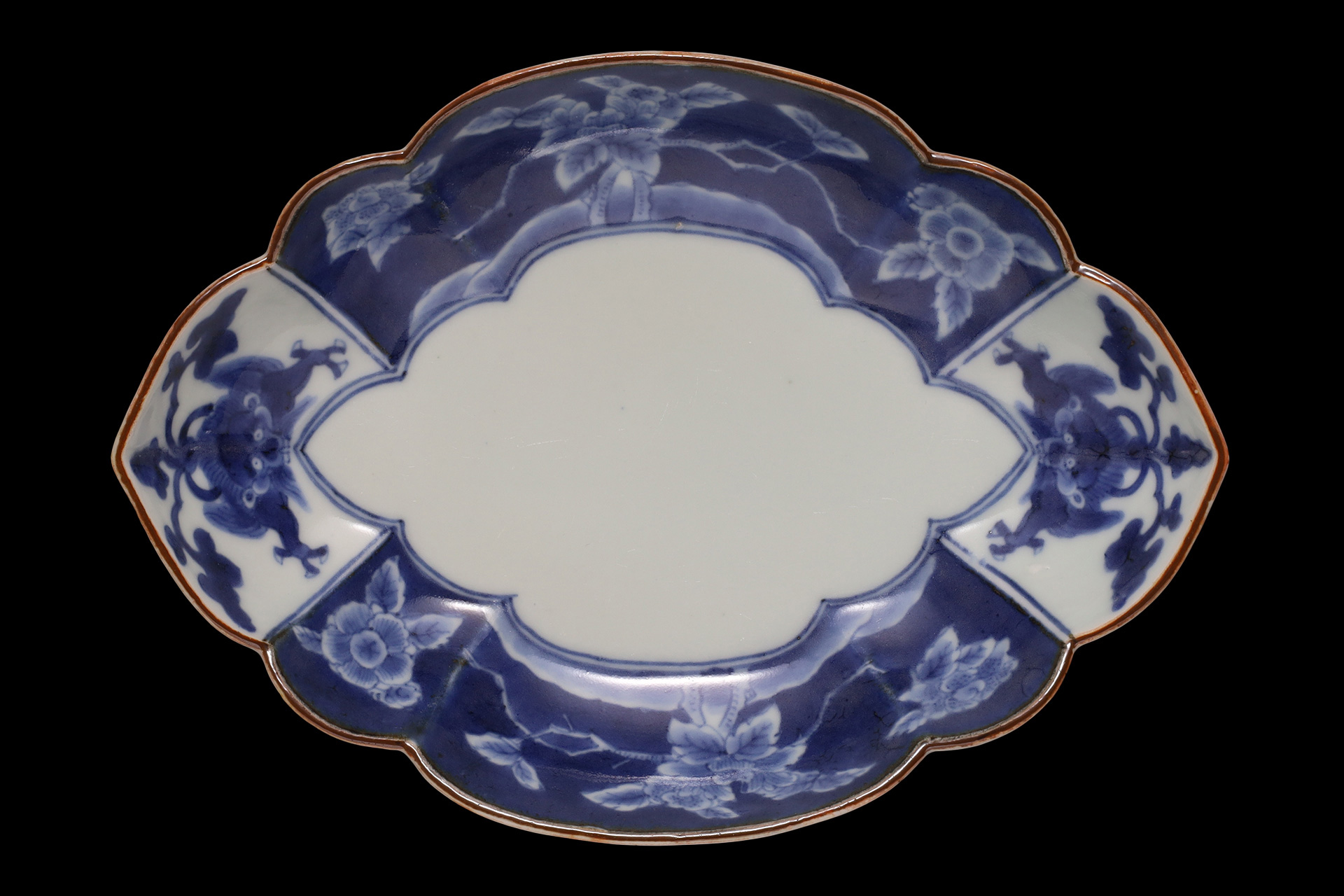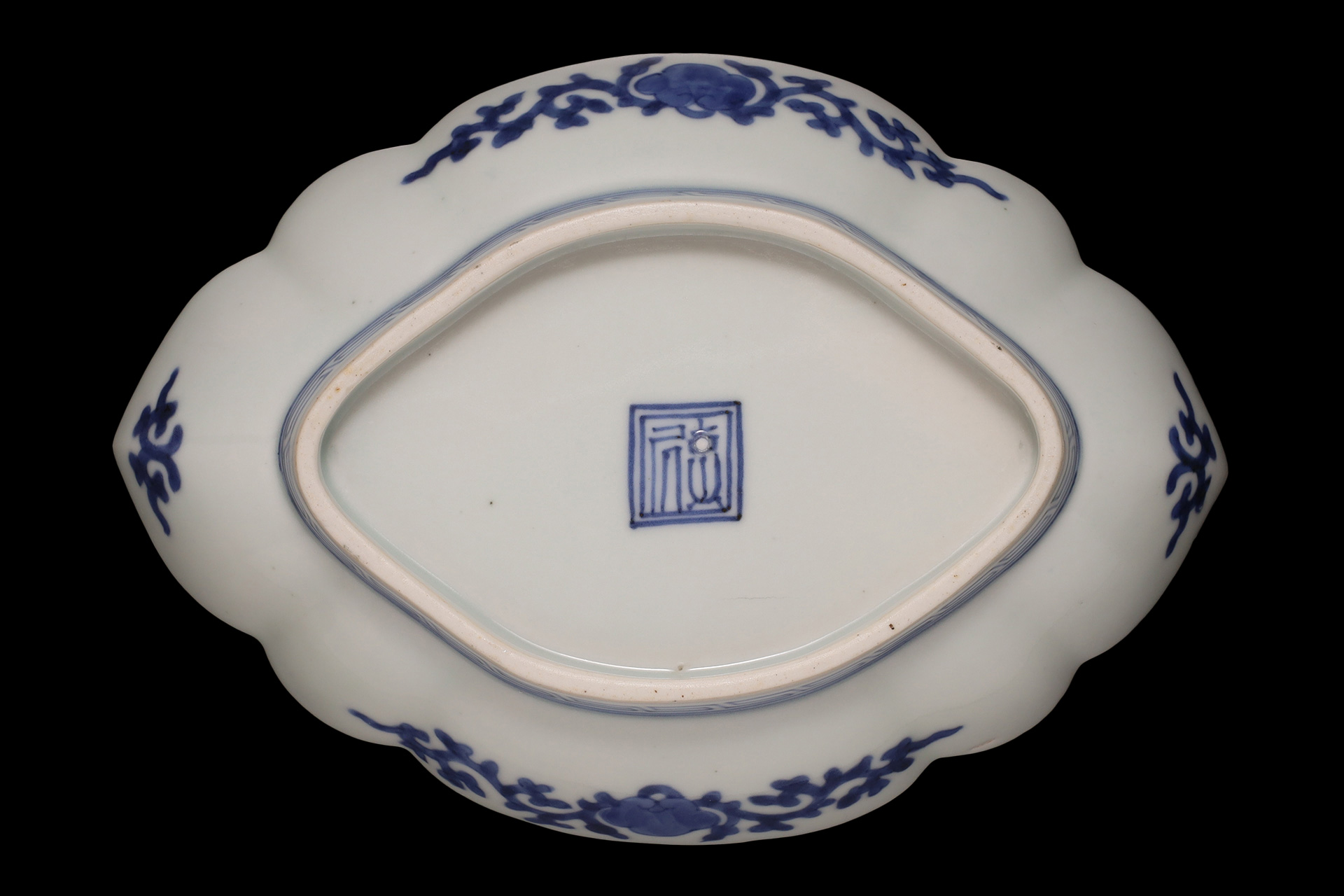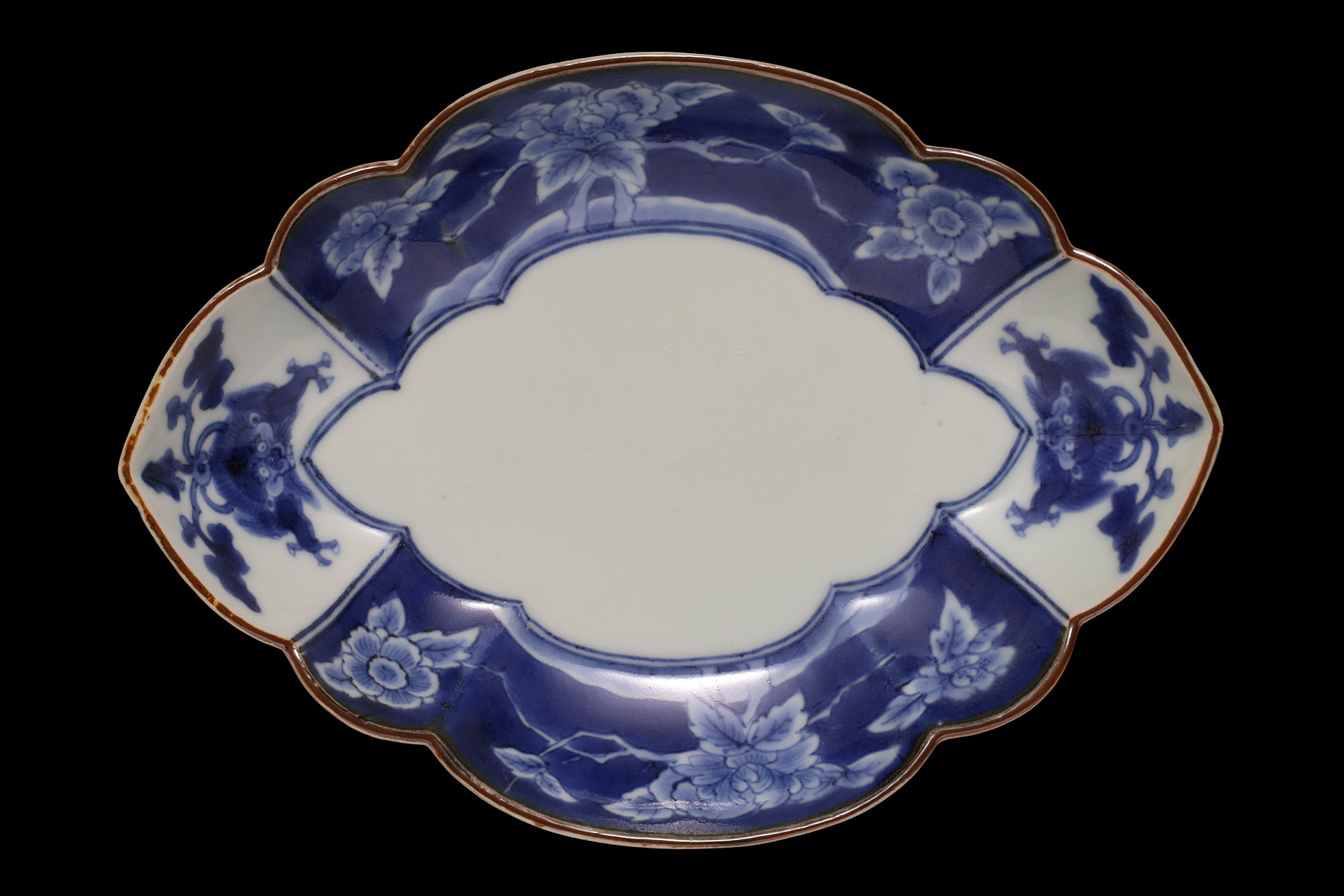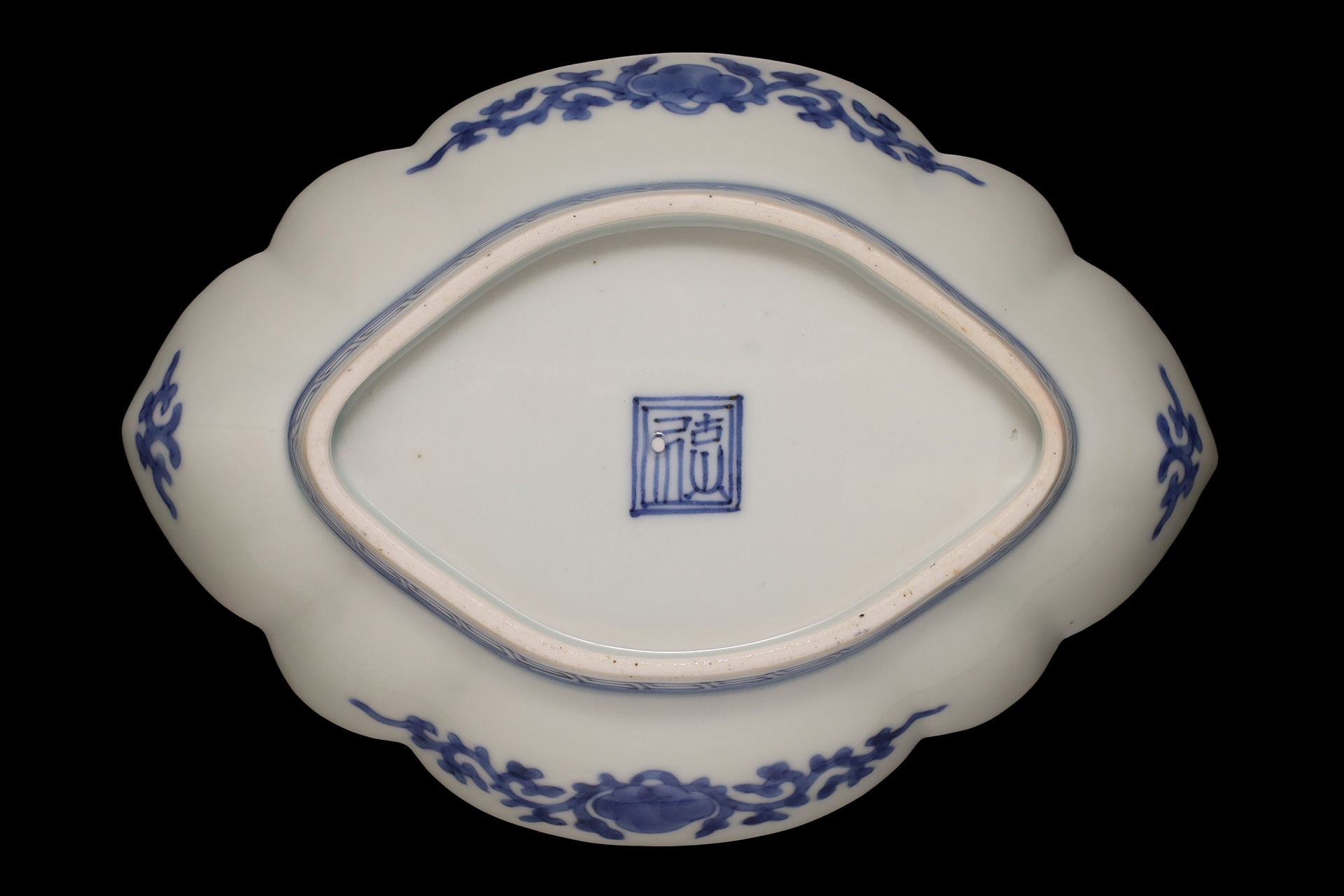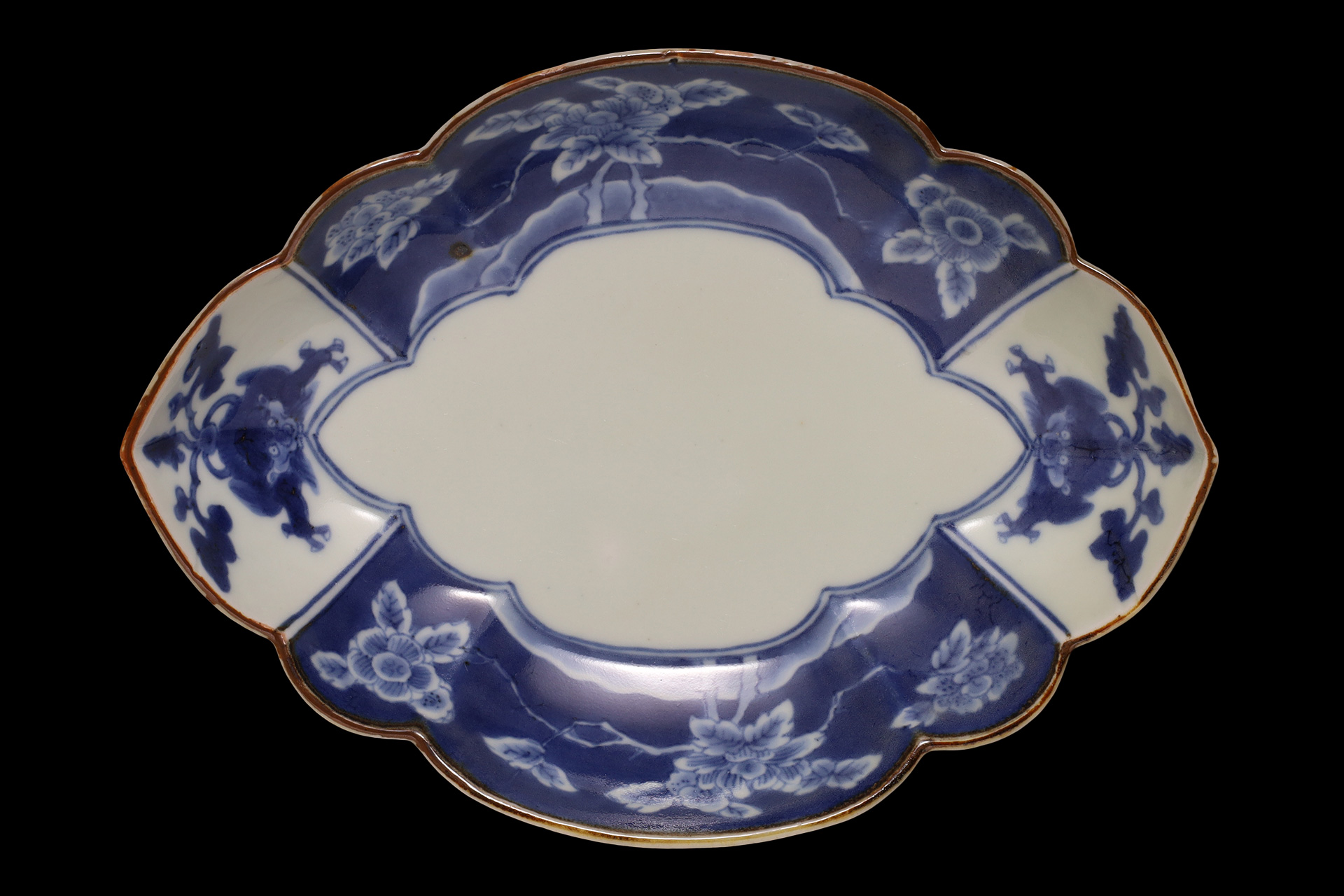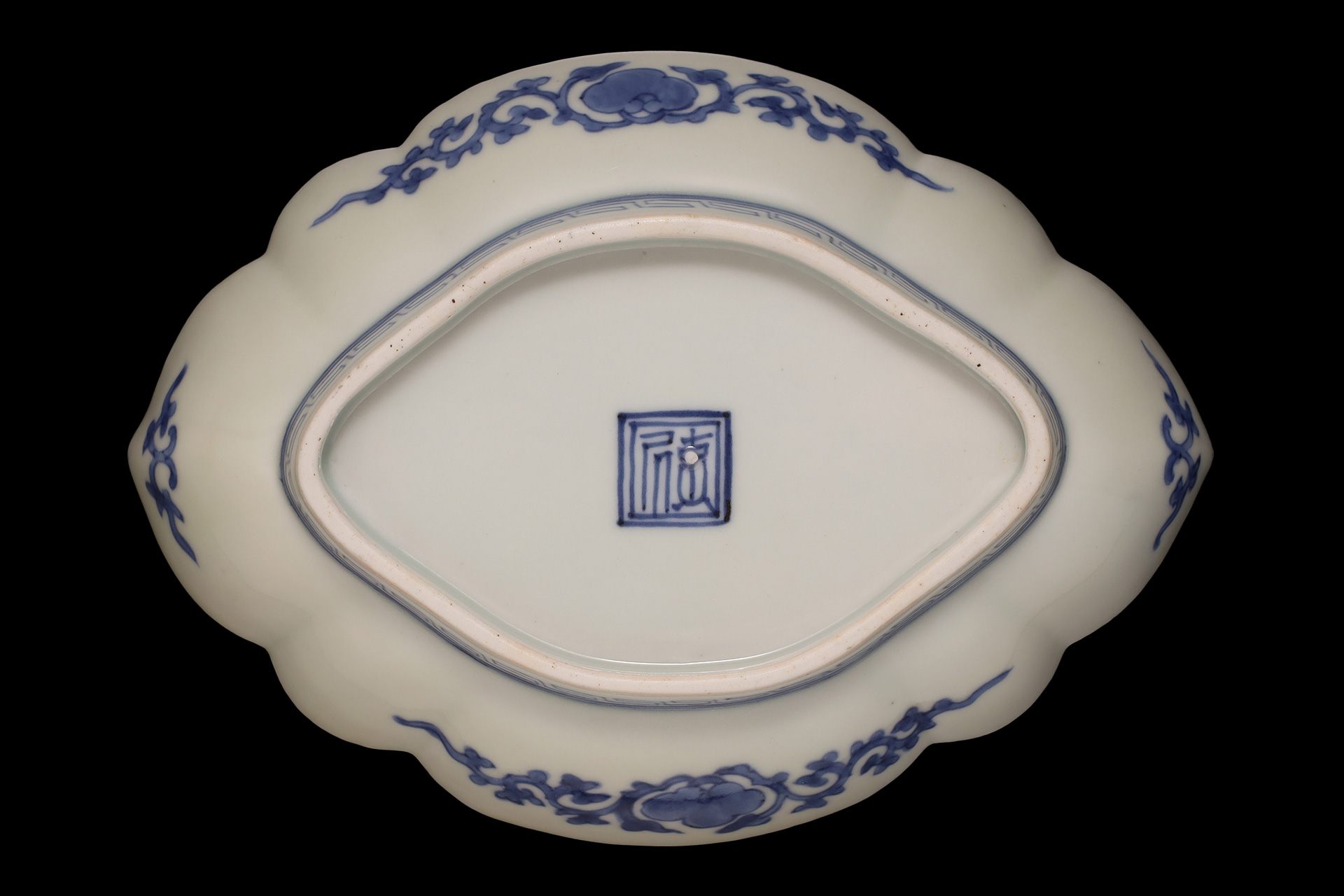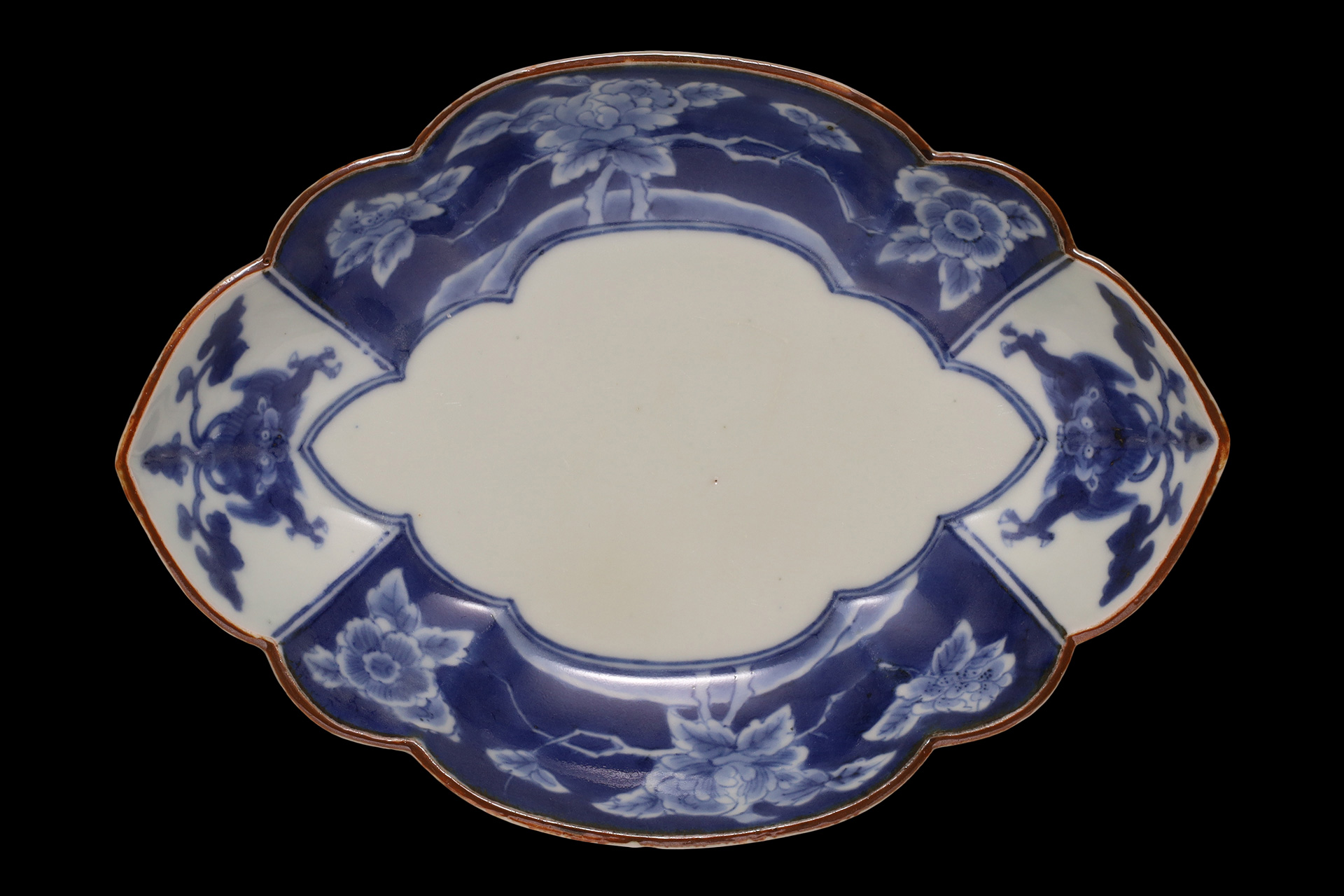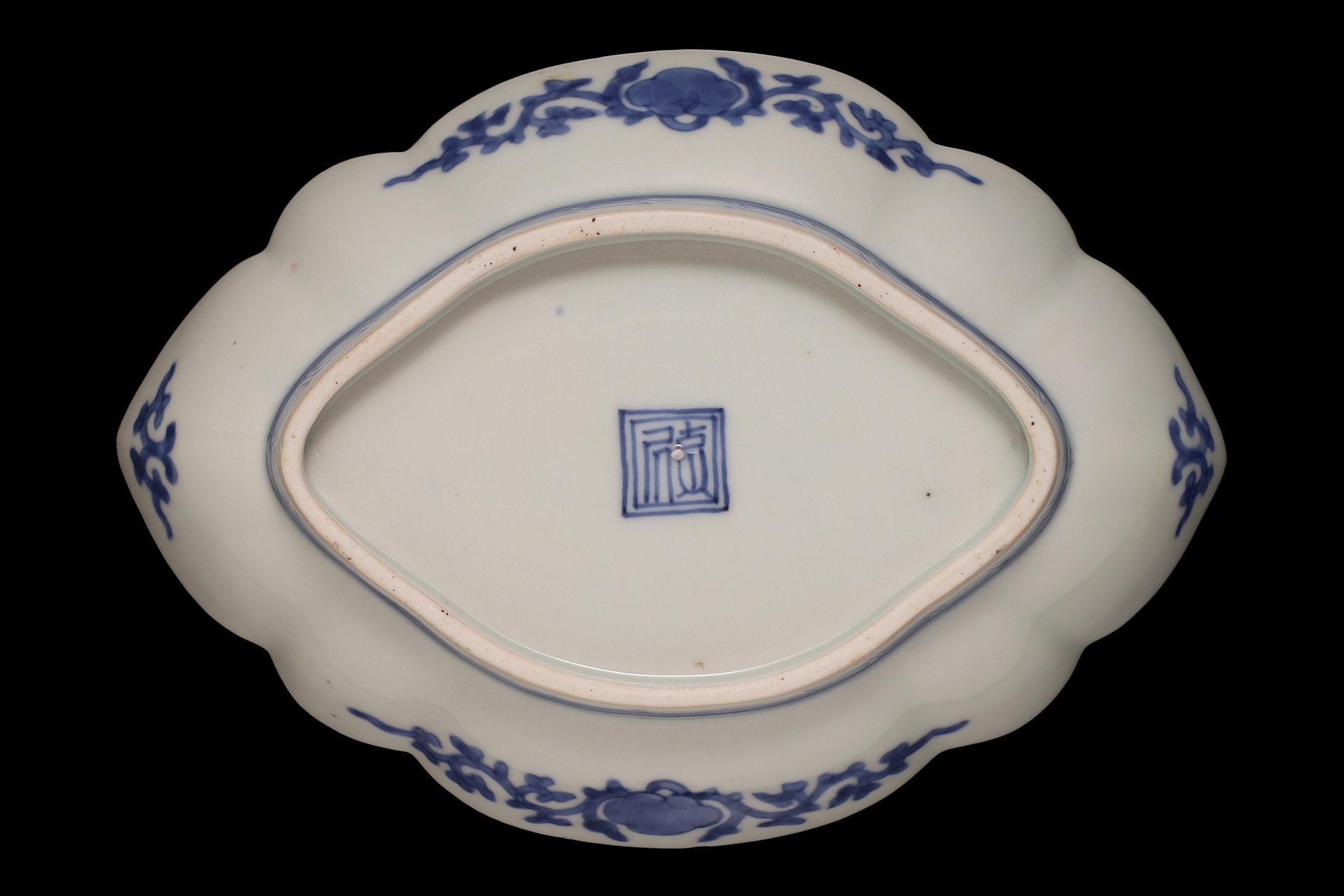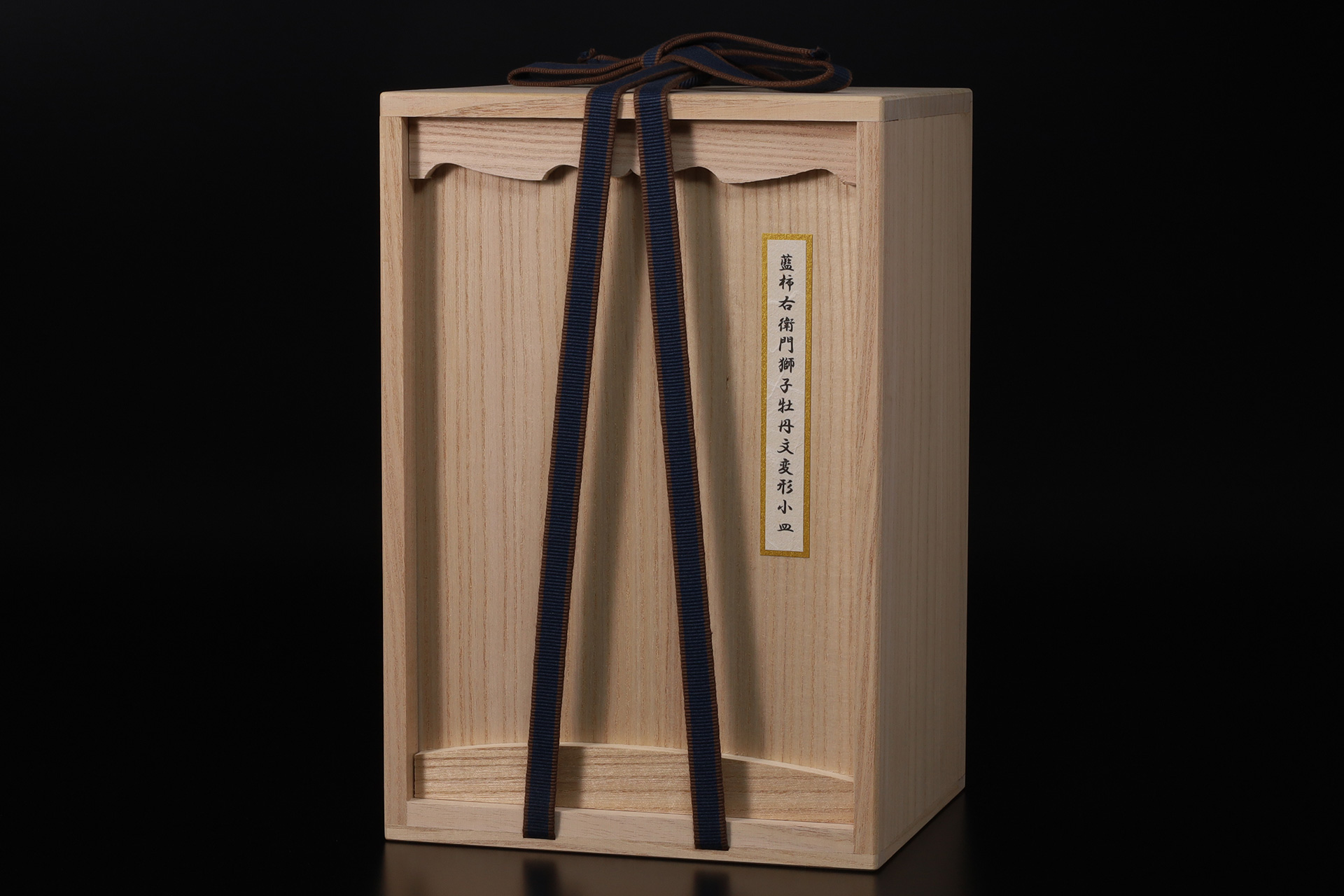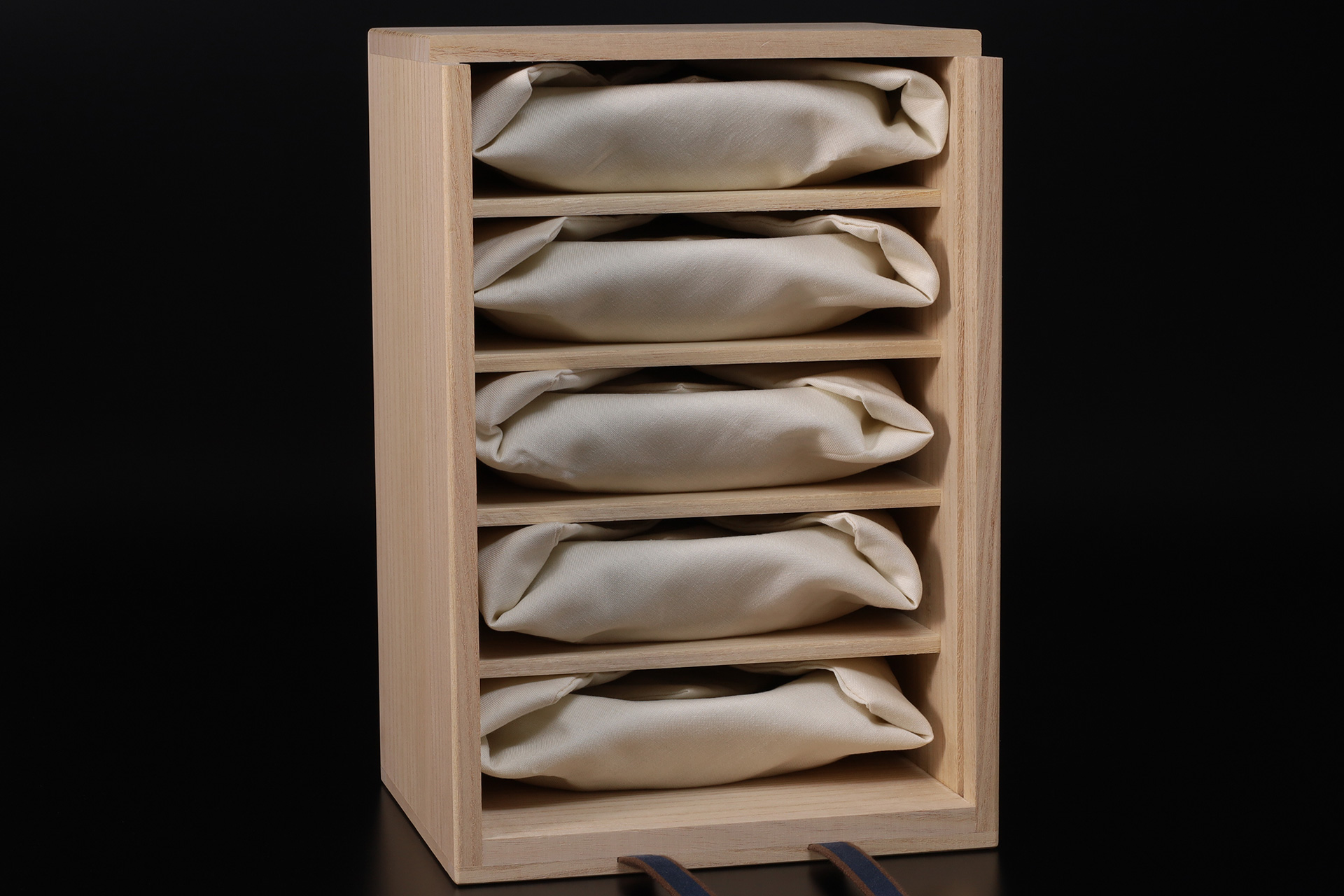Set of Five Irregularly Shaped Small Dishes in Kakiemon-Style Blue-and-White Porcelain with Lion and Peony Motif (Edo Period)
Sold Out
This is a rare and exquisite example of Hizen porcelain, representing the perfected form of sometsuke (blue-and-white porcelain) at the height of its technical refinement. The flawlessly balanced and meticulously crafted form is adorned with a lion and peony motif, rendered in sharp, spirited brushwork. The background, densely painted in deep cobalt, glows with a jewel-like radiance. Rust glaze applied to the rim lends compositional tension, while the white center enhances the colors of the cuisine, quietly enriching moments of hospitality with a touch of elegance. The inscription reads “Inishie-bito (Ancient Person)”, a mark reserved exclusively for masterworks. Its dignified presence carries an air of grace and quiet distinction, gently fulfilling the heart of the beholder.
Inquiry
- Product Code
- 250902-4
- Period
- Edo period
Late 17th Century
- Weight
- Approx. 176g per piece
- Width×Depth
- Approx. 16.4×12.1cm
- Height
- Approx. 3.7cm
- Base Diameter
- Approx. 11.2×7.0cm
- Fittings
- Tiered Paulownia Box
- Condition
- Intact
Its elegant form, vivid blue underglaze, and masterful firing embody the qualities of a truly distinguished work.
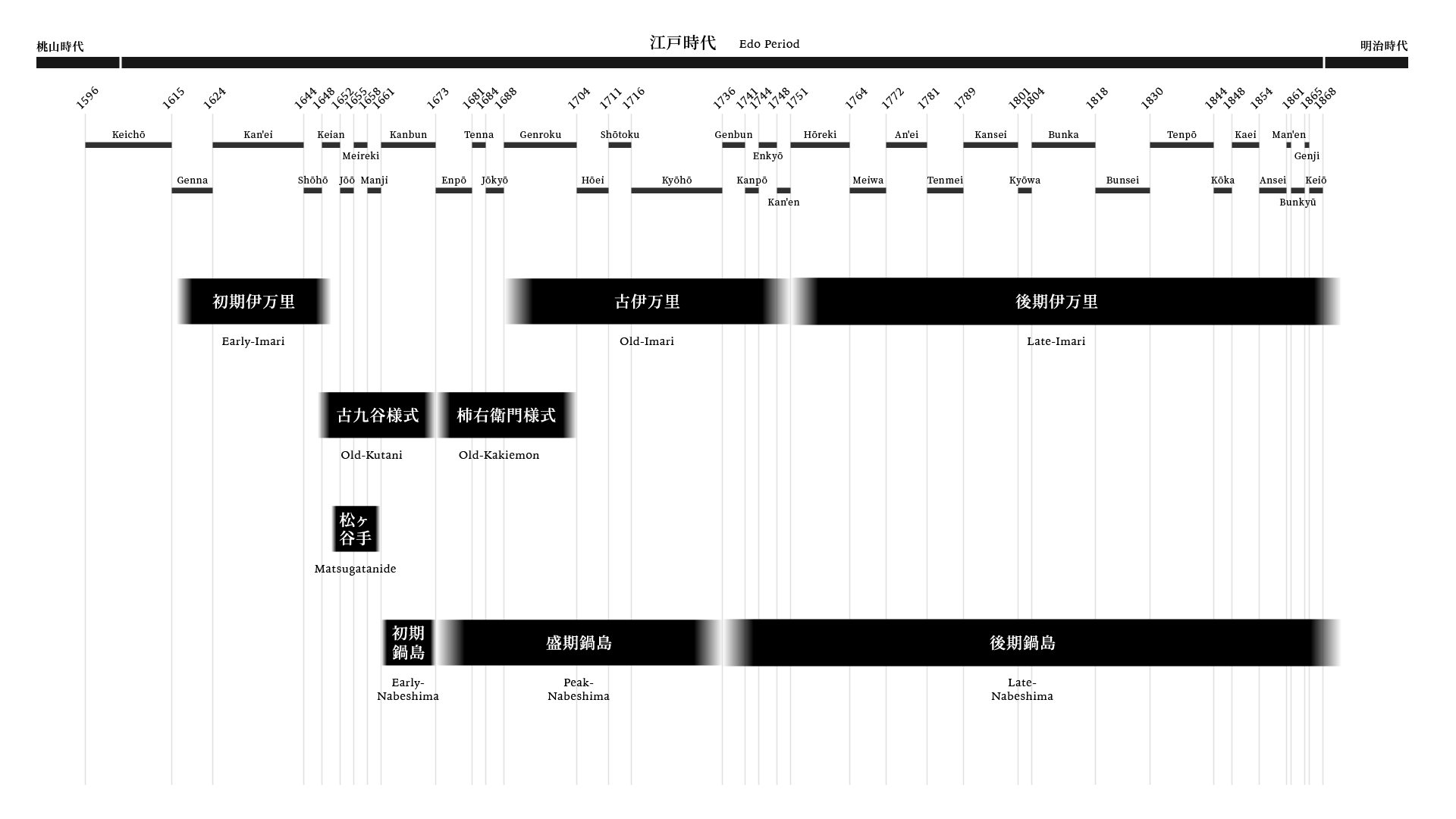
Kakiemon-Style
Kakiemon-style refers to a distinctive category of Imari ware primarily fired during the Enpō era (1673–81). These works were not exclusively produced by the Kakiemon family; rather, they emerged as a collective response to large-scale export orders from the Dutch East India Company (V.O.C.), and were completed across various kilns in Hizen Arita. The term “style” thus denotes a broader aesthetic, now widely recognized as “Kakiemon” in its extended sense. Characterized by refined compositions that embrace negative space and delicate brushwork by skilled painters, these porcelains possess an elegant and noble beauty. Their exquisite craftsmanship captivated European royalty and aristocracy, earning enduring popularity among the V.O.C.’s cargo offerings. Among the most celebrated features is the nigoshide body – a soft, milky-white porcelain base that heightens the brilliance of overglaze enamels. This innovation profoundly influenced the development of European porcelain, notably at Meissen and Chantilly. Signatures often include the stylized “uzu-fuku (spiral-fuku)” mark, where the character for “fortune” is rendered in a swirling motif. Other marks such as “kin (gold)” and “inishiebito (ancient person)” appear on particularly fine examples. While exported Ko-Imari ware from the Edo period also displayed opulent beauty, it was the Kakiemon-style that drew the greatest admiration. After World War II, many works that had journeyed to Europe were repatriated in large numbers. The sheer volume of exported works far exceeds the domestic legacy, underscoring the style’s original purpose as an export commodity. Notably, works that blur the distinction between Ko-Imari and Kakiemon-styles are often referred to as Kakiemon-de. In recent years, the term “Kakiemon” has come to be applied more broadly – even to later works of lesser refinement – reflecting evolving perceptions of the style.
https://tenpyodo.com/en/dictionaries/kakiemon/
String-Sliced Forming
String-sliced forming is a shaping technique that does not employ the potter’s wheel. Instead, clay slabs are sliced to a precise thickness using string, then pressed and compacted against an earthen mold. This method emerged in the 1640s and became widespread by the 1650s, following the establishment of mold-pressing techniques. It is particularly suited to vessel forms such as long plates, which are difficult to shape using mold pressing alone. In vessels with an attached foot—formed by applying clay to the base—the glaze naturally flows into the narrow gap between the base and the inner wall of the foot during application. Upon firing, this area develops a thicker glaze layer, often revealing a faint bluish hue. The glaze fuses the vessel and foot together, reinforcing the structure while imparting a sense of aesthetic unity. Thus, the trace of technique quietly resides in the underside of the vessel. In contrast to wheel-thrown production, which favors efficiency and mass replication, string-sliced forming demands considerable time and labor. Yet this deliberate pursuit of delicate, thin-walled forms reflects a profound aesthetic sensibility and reverence for shape. Used in the creation of refined wares that transcend mass production, this technique embodies a philosophy of beauty—an inner spirit inscribed within the vessel itself.
